Third National Flag of the
Confederate States of America

P. A. Stonemann, CSS Dixieland
National Jack of the
Confederate States Navy
|
Third National Flag of the Confederate States of America |

P. A. Stonemann, CSS Dixieland |
National Jack of the Confederate States Navy |
CSS Dixieland
Probing the depths of knowledge
These essays by P. A. Stonemann, CSS Dixieland, cover a wide range of
historical, philosophical, scientifical and technical subjects. Each page
deals with a particular topic, divided into sections and explained by itself.
Every page shows at its top hyper links to every other page. The Start page
also has short descriptions of the other pages. CSS Dixieland expresses
gratitude to the readers that make this work meaningful.
This Web document has been tested with KDE Konqueror, graphic HTML interpreter
for Linux. It may not be rendered correctly by other graphic HTML interpreters.
It will probably be correct when rendered by text-only HTML interpreters
(visual, aural, or Braille tactile interpreters), but if feasible, please use
KDE Konqueror. Uniform Resource Locator:
Chess Game page
The game for the superior mind
Sections in this page
History of chess
Technical note: In languages other than English or Latin, but which use mainly
Latin characters, some characters are taken from other alphabets, or some Latin
characters are modified with diacritic marks for representing different phonemic
sounds or other orthographic conventions of those languages. Those characters,
when used in this document, have been encoded as entities of Hyper Text Mark-up
Language or sometimes in Unicode UTF-8. Therefore computers using other
character encodings may render some characters inaccurately, but hopefully, it
will still be possible to read non-English words without too much difficulty.
History of chess
Chess is the game of intelligence par excellence. Other games also need a
good dose of intelligence, such as the game of draughts, but the complexity
of chess cannot be matched by any other known game in the World. Until the
late XX century there still were a few slight differences in chess rules as
played in certain countries, and there may still be some people who play
local matches under their old idiosyncratic rules, but for the most part
chess is now the only game of truly international scope, its rules being
today identical in every country. By comparison, the game of draughts is not
so international, as it is played differently in some countries. Even the
board for draughts may be of two different numbers of squares, either of 8 x
8 (64 squares) or of 10 x 10 (100 squares), while the board for chess is
invariably of 8 x 8 (64 squares). Being so universal, for playing chess it is
not strictly necessary even to speak the language of the other player. The
two players know the same rules, thus they can play in silence except for
the expressions "check" and "check mate", uttered in any language, and just
pointing with the finger for choices made at, for instance, promotion of
pawns. Traditionally, some expressions like "J'adoube", for arranging the
board during a match, are uttered in French.
The origins of chess
The true age of the game known in English as chess is somewhat of a mystery.
Several unsubstantiated hypotheses placed the date of invention of chess far
earlier than can be supported by historic evidence. According to one tale,
chess was invented about 1000 Before Christ by an Indian mathematician who is
also credited with the invention of the concept of powers in mathematics.
There are also unsubstantiated stories pushing the date of chess as far back
as 3000 years ago, based on archeological discoveries in Egypt, Mesopotamia,
and India. Although ancient Egyptians certainly played board games, there is
no known evidence that they ever played chess. Their most important board
game was called "senet", which was played between two opponents on a board of
3 x 10 (30 squares). There are senet boards and pieces depicted on Egyptian
paintings, as well as complete playing sets found in pharaonic tombs, like
that of Tutankhamon, discovered in the 1920's. But senet is not chess. Even
weaker is the claim for Mesopotamia as the cradle of chess. For India, though,
the case for chess becomes much stronger. Allusions to chess first began to
appear in Sanskrit literature in the late VI century or early VII century.
Sometimes the only reference is not to chess, but to the chess board called
ashtapada. This might have been a genuine chess board, or it might have been
an older Indian race game that was also played on an 8 x 8 board, using dice.
The probability is that the board of 64 squares, originally used for the race
game, gradually began to be used for experimenting with newly invented games,
of which the ancestor of chess took hold. Ashtapada means in Sanskrit "having
eight legs". The term "ashtapada" was used for a real spider, for a legendary
spider-like monster with eight legs, and for the game board ancestor of chess.
However, since there is no known mention of the game in ancient literature
before the year 570 after Christ, many historians have categorically affirmed
that the date of 570 is the birth date of chess. Probably had been played for
years before that, as one of several experiments. The first mention of the
game of chess is in a Persian poem dated of the year 600, according to which
the advent of chess took place in India. The introduction of chess from India
into ancient Persia during the reign of King Chosroe I Anushiravan (531-579)
is described in a Persian book dated 650-750. The same book describes chess
terminology and the name and functions of the pieces in great detail.
Mentions of the game of chess are found in the poems of Firdousi, a Persian
poet living at the turn of the X century. In a poem he describes gifts being
introduced by a convoy from the Rajah of India at the court of the Persian
King Chosroe I Anushiravan. Among these gifts, according to the poem, there
was a game which depicted the battle of two armies. After the Persian Empire
was conquered by Muslim Arabs in the early VIII century after Christ, the
game of chess started to spread throughout all of the civilised World.
There is medieval poetry mentioning chess as being present at the court of
the legendary King Arthur of Britain, in the VI century. This is probably
false, only the imagination of a poet who lived well after King Arthur. At
the time of King Arthur the game already existed in India, but likely it had
not yet spread abroad. Chess was introduced into Europe by Muslim Arabs who
conquered the lands from North-West India and Persia, reaching the Iberian
Peninsula in the year 711. Another possible entrance of chess into Europe
through Arab settlements in Sicily has also been proposed by historians, but
though the Arabs of Sicily probably played chess (in the Arab form known as
"shatranj"), there is no evidence that the game entered the rest of Europe by
that route. Chess was later carried into Italy from Germany, already in its
European variety. Without any doubt, chess was brought to the Iberian Peninsula
by Arabs in 711. According to one legend, an expensive and elaborate chess
set was in the early IX century presented as a gift by envoys of the famous
Muslim Arab ruler Harun-al-Rashid of Bagdad, to Charlemagne, King of the
Francs and Emperor of the West (the origin of the Holy Roman-German Empire).
European chess men
Colours are reversed for black, only white chess men are shown here:
This is one of various traditional representations of chess men in Europe. The
forms, colours and decorations of chess men and chess boards vary from a region
to another, in some cases considerably. In the British Islands and other parts
of Europe the Saint George chess design tended to be predominant until the mid
XIX century. In the year 1851 it was organised in London, as part of the 1851
World Fair, the first truly international chess tournament, to which all known
strong players in the World had been invited by letter several months in advance.
Players of many nations met at the tournament. The Champion was the Prussian
Grand Master Herr Adolf Anderssen, who received honours by Her Majesty in person.
In an effort to bring some uniformity to the game, for the benefit of players
coming from many countries to participate in the tournament, the organiser of
the historical event, British Champion Mister Howard Staunton, decided to use a
design that, in his opinion, would be more easily recognisable by non-British
players than the Saint George design. The new design became known as 'Staunton
Design', although it was not created by him. The so-called Staunton Design is
of official use in all matches organised by the Federation Internationale des
Echecs, institution headquartered in Sweden that regulates chess world-wide.
First European references to chess
The first references to chess in non-Muslim Europe are in the "Versus de
Scachis", appearing in the Einsiedeln manuscript of Switzerland in the year
997, and also in the Catalan Testament of the year 1008, though chess was
known in Europe at earlier times. Chess went to Germany from France in the X
or the XI century, with the earliest reference in German literature made by a
monk, Froumund von Tegermsee, written in 1030-1050. It is said that Svetoslav
Surinj of Croatia beat the Venetian Dux Peter II in a chess game, for the
right to rule the Dalmatian towns of the Adriatic Sea. From Germany chess
spread into Italy, hence later into England and other European nations. By
the X-XI centuries chess was known in Scandinavia, and in the XI century it
raught Bohemia from Italy (not from Germany). An essential archaeological
discovery made at Novgorod in Russia, which consisted of chess pieces of a
very characteristic Muslim abstract, proved that before arriving from Europe
chess had raught Russia directly from the Middle East, probably carried by
Swedish Varangians who made the river and land route between Bizantium and
Sweden. To this day, names of chess pieces in Russian indicate Persian and
Arabic origins. In old Russian folk poems there are some mentions of chess.
The present day European chess was, however, brought to Russia from Italy
through Poland. There is an idea that chess also was brought to Russia by the
Tartars who were the Mongol conquerors of the Far East and Middle East, and
who had learnt the game from the Persians and Arabs. If true, then chess
entered into Russia in different centuries and from three different routes.
Chess was forbidden in Europe for some time by the Christian church, because
it was often used for gambling, and some idiots even claimed that chess had
signs of paganism in it. However, nothing could stop the growing expansion of
the noble game among the educated classes, which is proven by the great deal
of literature that has been produced throughout the years. The oldest known
writings related to chess are from the middle of the IX century, from the
Arab author Al-Adli. These writings are collectively known as Mansubat. Chess
continued to grow, and soon most of the civilised World knew and cherished
this ancient game.
Original form of chess: it has been historically established that chess at
its origins was a four sided game, meaning that there were four sets of
pieces and was for four players. A die was cast by each player, and according
to its result a chess man or another had to be moved. Hence, still today in
many parts of the World the original name "shatranj" is used. It is an Arab
word derived from the Indian Sanskrit word "chaturanga", where "chatur" means
"four" and "anga" means "detachment". A book was written during the Sassanid
dynasty (242-651 after Christ) in Pahlavi language (Middle Persian): the
"Chatrang Namakwor" ("Manual of Chess"). In modern Persian nearly the same
word, shatranj, is used to refer to the game. A generally accepted historical
hypothesis is that the word "chess" is derived from the Persian word "shah"
("king"), and the term "checkmate" means "the king is dead" in Persian.
The Muslim Arabs had perhaps more influence in the game of chess than any
other culture. The contributions of the early Muslims to the game of chess
include blindfold play (without seeing the board), mentioned as early as the
year 700, the advent of the first tournaments and qualifying contests, in the
second half of the VIII century, the first known chess problems, nearly at
the same time, and the first known book on chess (by Al-Adli). The writings
of Al-Adli contained first moves, the first chess problems called "mansubat",
and discussed the differences between the Persian and Indian rules.
Unfortunately, this valuable book is lost today. However, in a Yugoslav
library was discovered and later exhibited in 1958 an important Arabic
manuscript of the early IX century that contained mansubat. Some of these
mansubat or chess problems were based on legends, such as one called "the
Dilaram mate". According to the legend, Dilaram was a chess player who
gambled in the game all that he had and eventually lost everything. In haste
he gambled his wife in one final game, and because of his reckless behaviour
he was losing the game and the odds were against him, until his wife noticed
that he could mate his opponent in a few moves by sacrificing both of his
rooks. So, she whispered this in his ear "loose Your castles and keep Your
wife", and he won the game.
The Byzantine form of chess called Zatrikion is played on a round board like
a disk, not a square board. The chess men and their moves are similar to those
in the Arabic style of the same period. After the introduction of chess into
Europe, there appeared many manuscripts of the game. Perhaps the most
important and valuable of these manuscripts from the Middle ages is one
compiled by Castillian King Alfonso X the Wise in 1283. It is written by
different authors, including the King himself. This great book contains 150
miniatures in colour, based on the original Persian paintings. Its chess part
includes a collection of conclusions of game derived from Arab literature.
Chess was shortly later introduced to many other nations, each of which
contributed in a way or another to the development of the game. Today the
official game of chess is remarkably very well preserved and not very different
from the original one played in India 1500 or so years ago.
Probable spread of chess
The route of the game of chess through different cultures and languages can
be summed up in the following diagramme:
Invented in India about 500 or earlier. From India to:
From the Arab Empire to Sicily
From the Arab Empire to the Iberian Peninsula about 711, from the Iberian
Peninsula to:
From Italy to Poland
From Italy to Scandinavia.
From Italy to England.
It can be seen in the diagramme above that chess did not always spread into
geographically contiguous lands, but rather due to other factors, such as
naval routes, military campaigns, or commercial relations. As an example,
chess entered England from Italy, not from France or from the Low Countries.
In fact, except for the Byzantine Empire, the Iberian Peninsula, France,
Germany, and perhaps Sicily, it is known beyond doubt that peninsular Italy
was the centre of radiation of chess to most European countries. This is
understandable, keeping in mind that some of the Italian states, such as
Genova or Venice, controlled much of European commerce with the rest of the
known World.
Fairy chess men
Colours are reversed for black, only white chess men are shown here:
Chess has always captured the imagination of intelligent and creative men. One
of the results has been the invention of what is called 'fairy' varieties of
chess, this is, chess varieties more or less based on European chess or on some
of its ancestors (ancestors such as medieval German courier, medieval Iberian
grande axedrez, Arab shatranj, Persian chatrang, or Indian chaturanga), or chess
varieties based on traditional games which very probably are themselves derived
from chaturanga, considered the common ancestor of all or nearly all varieties
of chess (traditional games such as Chinese xiangqi, Japanese shogi, Siamese
makruk, Cambodjan ouk, or other chess-like games). Most fairy varieties depart
from European chess, or from traditional chess-like games of other countries,
in one or more groups of characteristics:
-Chess men who have different rules for moving or also for capturing, like pawns
in berolina chess (they advance in diagonal and capture ahead in orthogonal), or
chess men who have intrinsic royal value, meaning that losing any of them or all
of them loses the game, like the two Spartans of 'Spartan' chess (it is a modern
invention, unknown to ancient Lakedemonians), or chess men who interchange some
characteristics with other chess men, like the 'keen' (moves as king, captures
as queen), or the 'quing' (moves as queen, captures as king), or chess men with
bizarre peculiarities. The fairy chess men shown above are examples of some of
those extravagances. The list is not exhaustive, there are many more.
-Boards smaller or bigger than 8 x 8 squares in either or both dimensions, like
the 12 x 8 courier, the 12 x 12 grande axedrez, or the Timur Lenk great chess,
or boards of irregular format, like Greek zatrykyon, or boards that unite the
edge of one side with the edge of the opposite side, like cylindrical chess, or
other special boards, like the three dimensional board inspired on the Science
Fiction Star Trek series.
-Different rules for some operations, some of them recent inventions, like
Fischer random castling, while others traditionally played in some countries,
like Italian 'free' castling (practised in Italy until the XIX century), or
Spanish move of two pawns, one step each, for either or both players at the
start of the game (practised in Spain until the late XX century, perhaps even
today, in non-rated games), or other idiosyncratic rules.
-Games that are identical to European chess in all rules EXCEPT in some
fundamental aspect, like German Kriegspiel, played on two boards, where each
player only sees his own board, he does not see the moves of the other player
(there is a referee who notifies when a move is not legal, but who normally does
not intervene in the game).
-Varieties that combine chess with other games (with draughts, for instance), or
varieties that introduce rules from other games, like the forced capture or
'blown' chess man (as in draughts), or varieties intended for more than two
players (there is a patented chess variety for three players, with chess men of
three different colours, each of the three armies starting from one of three
non-contiguous sides of an hexagonal board), or varieties of opposite goals,
like suicide chess (losing all chess men wins the game), or other unique
varieties of difficult classification.
All that creativity exists because chess is an absorbing game for the
intelligent mind. Computer executables such as Fairymax come with plenty of
varieties already defined in an initiation script. The script is succintly
self-documented and allows an inventive player to define his own varieties in
many ways, for playing against the computer or against a human opponent (the
computer may be used as a board with validation for legality of moves). It is
possible to define in Fairymax a huge collection of fairy chess men, all sorts
of rules, or combinations of chess with other games, in a board as gigantic as
16 columns (files of width) x 16 lines (ranks of height), thus 256 squares. The
only limit is the imagination of the player.
Fairymax can be used with Xboard in Linux or some other Unics systems. In this
case the board size is limited by Xboard to 12 columns width x 14 lines height,
thus 168 squares. Xboard needs a graphic interface, so if used together, then
Xboard and Fairymax may be called by a single command from a terminal emulator.
Example:
xboard -depth 8 -fcp "fairymax 22 /media/sda1/fmax.ini"
Where -depth 8 indicates a ply depth of eight moves (white and black counted as
separate moves). Ply depth is defined by an integer from 1 (very weak player) to
16 or higher (very strong player, up to about 2050 Elo rating in the case of
Fairymax).
-fcp is the Xboard command for calling an engine. Parameters for the engine, if
any, must be written after the name of the engine, in double speech marks that
include the name of the engine. Speech marks are optional when calling an engine
without parameters. Fairymax is here the engine, 22 is a default value (it may
be omitted), which indicates a memory of 48 Megabytes for the internal hash
table of Fairymax. The value may go from 19 (for 6 Megabytes, less is not
recommended) to 25 (for 384 Megabytes), or higher value, but Xboard and other
processes also use memory, therefore it should not be specified too much memory
for Fairymax.
The path to fmax.ini given above is only an example, it may be different from a
computer to another. It points to the initiation script for Fairymax, originally
located at /usr/share/games/fairymax in a typical Linux system. The script may
be located in another place, giving the path for it when calling Fairymax
directly, or when calling Fairymax through Xboard. Commands such as 'find',
'locate' or 'whereis' may be useful for finding the original script, but
fmax.ini must not be confused with the 'fmax' programming function. The script
fmax.ini should be copied to another location for performing any alterations,
without touching the original script.
Many options can be chosen from buttons in the menu of Xboard, such as:
-Help: Page of Xboard in the System Manual. There is also a page of Fairymax,
but it cannot be opened from Xboard. See below how to do it.
-Options: General options, time control, adjudications, load or save game, other
options. Time control may need to be changed, it comes with 300 seconds to each
player by default. That is not serious chess.
-Engine: List of available engines, load new engines, define their settings, et
cetera. Some settings depend on the capabilities of each engine.
-Action: Results of games. Useful through an Internet Chess Server, not
off-line.
-Mode: Machine plays white or plays black, two machines play (same or different
engine), analysis, edit game or position. Two humans can play as 'edit game',
using Xboard as a validator for legality of moves, but without clocks.
-View: Engine output, move history, evaluation graphic, edit themes, board,
fonts. Evaluation only approximate, and more tactical than strategical, yet
useful for example as a guide of what the engine considers a good or bad debut.
-Edit: Copy, paste or edit game or position, move forward or backward in the
game. This edition is one of the methods for setting a given problem or end of
game, or an interesting situation in a game. Forsyth notation is understood.
-File: New game or fairy variety, load or save game or position, make opening
book. A player may compose his own book of favourite chess debuts, which may be
used by an engine through Xboard, depending on the engine.
Pages of the System Manual can be opened from command line or terminal emulator:
man fairymax
In graphic interface, the help of Konqueror can also be used for opening pages of
the System Manual (and of GNU Info), in systems that have the Konqueror executable.
Do not feel lonely if You do not find a human player accepting to play the
brilliant and exciting chess variety that You have invented. Play against the
computer, it is one of the many reasons why computers exist. Your computer will
become Your best friend, not only as a mate for playing games, but in many other
aspects too. After all, brilliant minds have always been solitary souls.
Chronology of chess
After Christ:
About 570: Perhaps the first reference to game pieces that could be chess or
a similar game is found in "Vasavadatta" by Subandhu (550-620), written in
Sanskrit in North West India. This is a romantic story about Princess
Vasavadatta of Ujjaini, daughter of King Pradyota. The Princess fell in love
with King Udayana of Vatsa. There is a description of chess men (nayadyutair)
and chess squares (koshthika) on a two-coloured chess board. The game itself
was probably chaturanga (not mentioned by Subandhu), generally considered the
ancestor of chess, although some scholars now view this hypothesis with
reserve. China has also been proposed as the cradle of chess, but there is no
strong evidence to support this alternative hypothesis either. Chaturanga in
Sanskrit means four parts or detachments. A typical Indian army had four
parts: elephants (dwipa, singular gaja = elephant, today's bishop), chariots
(rat-ha = chariot, today's rook, castle), horses (ashwa, singular turaga =
horse, today's knight) and Infantry soldiers (patti = soldiers, today's pawns).
It seems that chaturanga was initially a game for four players, each with one
king, one elephant, one chariot, one horse and four Infantry soldiers, starting
the battle from one of the corners. Later it became a game for two players by
confederating forces, one of the kings remaining as such and the other king
becoming Head of Government (visir = prime minister, today's queen).
About 600: The first known reference to Persian chatrang is in the
"Karnamak-i-Artakhshatr-i-Papakan" (The Records of Ardashir, son of Papak),
written in Pahlavi (Middle Persian). It is a text to honour Ardashir
(Artaxerxes), the founder of the Sassanid Kingdom. He was King of Persia from
226 to 241. The text mentions that Ardashir was skilled at chatrang, in which
case the game already existed in Persia in the III century, and in India even
earlier. This hypothesis may be taken with some reserve: perhaps the King
played another board game and a confusion of names happened to his later
chroniclers.
About 620: "Harshacharita" (memoir of Harsha) by Bana Bhatta (Bhattabana),
written in Sanskrit. It is a text to honour Harshavardhana (Harsha), an
emperor in North India from 606 to 647. There is a reference to the
ashtapada board used in chaturanga. Bana also wrote "Kadambari" which might
have had several other references to chess.
About 700: "Xusraw Kawadan ud redag" (Khosro, son of Kavad, and his page),
written in Pahlavi. It mentions ashtapada, chaturanga and nard. Xusraw I
Anushiravan (Khusraw, Khosro, Chosroes) was King of Persia from 531 to 578 or
579. In all likelihood, he was the man who received the first Indian chess
set (the legend of the wheat grains doubling on each of the 64 squares: 1, 2,
4, 8, 16, 32, 64, 128, 256, 512, 1024... amounting to an incredibly huge
number on square 64th).
About 720: From Persia, chess is carried to the Arab Muslim Empire.
European representation of Arab shatranj at the left of the observer,
European representation of great shatranj variety at the right.
Each of the eight pawns moves one step even as his first move. There is
no capture en passant.
Each of the two elephants moves exactly two steps in diagonal and can jump
over friends or enemies.
The visir moves one step in diagonal. He is therefore weaker than the king or
than a castle.
There is no castling (interchange of king and castle to middle locations
between them).
A solitary king loses. Giving stale mate is a victory, not a tied game (of equal
score). There are still other causes that may result in a drawn game
(undecided).
Arab shatranj seems to have begun in the early VIII Christian century (late I
Islamic century) as a slight variety, if any, from Persian chatrang, as
this one was a slight variety, if any, from Indian chaturanga. Shatranj is
played until today in some Arab countries, but European chess is also played.
Great shatranj is a complex variety played on a board 10 x 8, adding a few other
pieces. It is preferred by some, but not as popular as the traditional shatranj
played on a board 8 x 8. European chess is another variety from shatranj, which
began to diverge about the year 1300.
In the course of time various new rules were introduced in Europe, notably the
elephant became the more powerful modern bishop (perhaps by influence of
religious people), and the visir became the much more powerful modern queen
(undoubtedly by Machiavellian schemes of feminists). Yes, there were feminists
even at that time. Sigh...
First mention of chess in Arabic
About 728: Perhaps the first reference to chess in Arabic is "Naqa'id
Jarirwa-al-Farazdaq", a poem by al-Farazdaq (641-728). It mentions Baidaq,
the pawn (foot-soldier) of shatranj.
About 800: "Chatrang-namak" (Matigan-i-chatrang), written in Pahlavi, about
the history of chatrang and the introduction of the game into Persia during
the time of Xusraw I Anushiravan (Khusraw, Khosro, Chosroes) who ruled from
531 to 578 or 579.
About 800: A legend says that the envoys of the Muslim Arab ruler
Harun-al-Rashid of Baghdad presented Charlemagne with an expensive chess set.
About 840: "Kitab ash-Shatranj" (Book of Chess) by al-Adli ar Rumi (800-870),
in Arabic. This is a lost manuscript, but referenced in later works. It was
considered the first comprehensive book dealing with chess. We know of it
through referring manuscripts, like that by the Caliph Billah of Baghdad,
that preserved some of its text and chess problems. The text included chess
history, first moves (commencement), last moves (conclusion) and mansubat
(chess problems). The collection had hundreds of chess problems. He also
classified chess players into five distinct classes, and found a system for
sorting out the first moves into positions, which he called Tabiya. His lost
book might have also been the first to describe the knight's tour.
About 845: "Latif fi-sh Shatranj" (Elegance in Chess), shatranj problems by
ar-Razi, in Arabic. ar-Razi defeated al-Adli to become the strongest chess
player in the World. He also wrote "Kitab ash-Shatranj", which has since been
lost. All that has survived of ar-Razi's book are a few opinions on
conclusions of game and two chess problems.
About 850: "Haravijaya" (the Victory of Siva) by Rajanaka Ratnakara
Vagisvara, in Sanskrit. The book is an epic that describes the defeat of
demon Andhaka by Siva. It explained the four units of the old Indian army and
the ashtapada, referring to chess. The four units were patti (foot-soldiers),
ashwa (horses), ratha (chariots), and dwipa (elephants).
About 875: "Kavyalankara" (A work on poetics) by the poet Rudrata of Kashmir,
in Sanskrit. It alludes to the knight's tour problem. It used a half chess
board to cover all squares by a chariot (rat-ha = rook), elephant (gaja),
and knight (turaga = horse).
About 890: Abu-Bakr Muhammad ibn Yahya as-Suli (854-946) co-authored a book
of problems (mansubat) and a book of first moves (ta-biyat) for shatranj,
called "Kitab-ash-Shatranj" (Book of Chess), volume one and two. He was
assisted by Abu l-Abbas Ahmad ibn Muhammad as-Sarakhsi, a physician. One of
his books contained the knight's tour on an 8 x 8 chess board. as-Suli was the
strongest player of his time, the World Champion. One of as-Suli's books was
a critique on al-Adli's book.
About 900: Entry on the Chinese version of chess in the Chinese work "Huan
Kwai Lu" (Book of Marvels).
About 920: "Kitab mansubat ash-Shatranj" (Book of Chess problems) by
Abu'l-Faraj ibn al-Muzaffar ibn Sa'id al-Lajlaj (900-970), in Arabic. It is
another lost chess book. Manuscripts containing some of its content have
survived. He might have been the first person to analyse and publish chess
first moves. Al-Lajlaj means the stammerer. The oldest chess game today known
comes from a match between as-Suli and al-Lajlaj.
About 920: "Kitab akhbar ar-rusul wal-mulukthe" by the historian Abu Ja'far
Muhammad ibn Jarir at-Tabari (838-923). He mentioned a chess incident in 802
between Nicephorus, Emperor of Byzantium, and the Caliph Harun al-Rashid. He
described another incident of how the caliph al-Mutazz was playing a game of
chess when a messenger brought the head of his rival, al-Musta'in, to him.
The caliph paid no attention until the chess game was over.
947: "Muraj adh-dhahab" (Fields of Gold) by the historian Abu al-Hassan Ali
ibn al-Husain ibn Ali ibn Abdullah al-Masudi (888-956), in Arabic. It is a
history of chess in India and Persia. al-Masudi is known as the Herodotus of
the Arabs. He was the first to combine History and scientific Geography in a
large-scale work. He wrote a History of the World in thirty volumes. He
describes six different varieties of chess, including astrological chess,
Byzantine round chess, circular chess and cylindrical chess. He mentions
chess wagers in India, who gambled at chess games. He describes the use of
ivory in India to make chess pieces.
Chess is mentioned in Europe
997: "Versus de Scachis" in the Einsiedeln manuscript, in Switzerland, is the
earliest known text mentioning chess in non-Muslim West Europe. It is a
Latin poem on chess, in 99 lines. It describes a chess board in two colours.
Shatranj was already known to the Arabs settled in the South Iberian
Peninsula since the year 711, probably also known to the Arabs settled in
Sicily.
1008: Mention of chess in the last will of Count Ermengaud I of Urgel, in
Catalonia, the second earliest known reference in non-Muslim West Europe.
He willed his chess men to the Convent of Saint Giles of Nimes.
Late X century: Dark and light squares are introduced on a chess board. This
was not always done as a rule.
1011: "Shahnama" (Book of Kings), the national epic of Persia, begun by
Daqiqi (900-976) in 975 and finished by Abu'l-Qasim Mansur Firdawsi
(940-1020) in 1011, in Pahlavi. It is similar to the Chatrang-namak. It tells
how chatrang was introduced into Persia from India. Ambassadors from India
(Hind) came to Persia during the reign of Nushirwan (Chosroes I Anushirwan)
with a chess board and chess men. If the Persians could solve how the chess men
were correctly set on a chess board, then the Indians would pay the tribute to
the Persians. If they could not solve the problem, then the Persians were
intellectually inferior and the Indians would no longer have to give tribute
to Persia. In fact, if the Persians could not solve how the pieces were set
up, then Persia would pay tribute to India. The Persian King's minister,
Buzurjmihr, took the board and pieces to his home and discovered the secret
in a day and a night. This is of course an idiotic story, because the initial
array of the chess board is completely conventional. But those legends seem
to be fond of idiotic stories.
About 1030: "Tarikh al-Hind" (History of India) by Abu'r-Raihan Muhammad ibn
Ahmad al-Beruni (973-1048), also known as Alberuni, in Arabic. It is a travel
description, including the rules of chaturanga for four players, using a die.
1030: "Ruodlieb" by a monk from the Abbey of Tegernsee in Upper Bavaria,
German romantic poem in Latin. It is the first reference to chess (ludus
scachorum) in German literature (not yet in German language). A knight was in
the company of an enemy king (either King Henry II or King Robert of France),
to whom he beat at chess.
1058: The last will of Countess Ermessind of Barcelona mentions chess. She
left to the Convent of Saint Giles of Nimes her crystal chess men.
1061: Cardinal Petrus (Pietro) Damiani (1007-1072) of Ostia writes a letter
to Pope-elect Alexander II and Archdeacon Hildebrand (later Pope Gregory VII)
complaining about chess being played by lay people. He urged the Pope to
forbid chess to the clergy and to punish the Bishop of Florence (who later
became Pope Nicholas II) who played chess at a lodging. Cardinal Damiani was
later canonised and made Doctor of the Church. Damiani's efforts placed chess
in the list of games forbidden to the clergy. The reason explained was that
chess was often used for gambling.
About 1110: Encyclopaedia "Manasollasa" (Delight of the Spirit), by the South
Indian King Sovedeva, in Sanskrit. It is the first description of chess in
South India. It gives a long list of games played, including chess.
1148: "Rajatarangini" (River of Kings) by Kalhana, in Sanskrit. It is a
chronicle of the Kings of Kashmir. It alluded to chaturanga for four players.
1148: "Alexiad", a History in fifteen volumes, in Greek. This is the first
Greek reference to chess. It is the biography of the Byzantine Emperor
Alexius Comnena (1050-1118) by his daughter Anna Comnena, while in exile. In
book twelfth she describes her father playing chess with friends. She also
says that chess was invented by the Assyrians, which is very probably wrong.
The Crusaders might have known chess from Emperor Alexius Comnena, and might
have brought it into West Europe.
1173: Earliest recorded use of an algebraic notation. Descriptive notation is
anyway the preferred one by most writers.
About 1250: "Quaedam moralitas de scaccario per Innocentium papum" (the
Innocent Morality), in Latin. It might be the oldest of chess moralities. The
World resembles a chess board. Things are in black or white. The colours
represent life and death, or praise and blame. It was firstly attributed to
Pope Innocent III (1163-1216), a prolific sermon writer. Later, it was
attributed to John of Wales (1220-1290), a Franciscan who taught at Paris and
Oxford, who was a chess player.
About 1205: "Wigalois" by Wirnt von Gravenberg. It mentions medieval German
courier chess, played on a 12 x 8 board.
About 1280: "Liber de moribus hominum et officiis nobilium" by Jacobus de
Cessolis (1250-1322), a Dominican from Lombardy. It is one of the earliest
allegories and moralities pertaining to chess, and it began as a sermon.
Probably no other book of mediaeval times was copied so much, it even
rivalled the Bible. The sermon is divided in four books and twenty-four
chapters. The first book deals with the origin of chess and the fourth book
deals with the moves of the chess men. The other books explain the pieces as
symbolical of the feudal society. He attributes the invention of chess to
Babylon during the reign of King Merodach. Chess corrected the evil manners
of this King and avoided his idleness. This is almost for sure historically
wrong. It is a version of the original Innocent Morality.
The first rules specifically for European chess
1283: "Libro de Juegos del Axedrez, Dados y Tablas" (Book of Games of Chess,
Dice and Tables) written by different authors, compiled by King Alfonso X the
Wise of Castille (1221-1284), who also wrote some parts. This is the first
encyclopaedia of games in Europe. The first of seven parts of the manuscript is
devoted entirely to chess, explaining the rules of Arab shatranj (not of the
European variety of chess, which did not yet exist). The book contains a hundred
and three problems and includes descriptions of some chess varieties, such as
medieval Iberian grande axedrez, played on a board 12 x 12 and in vogue with
Iberian nobility in the Middle Ages.
About 1300: In Europe is introduced a new rule: pawns can now move two squares
in their first move. With this rule, European chess begins to diverge from Arab
shatranj. The book compiled and in part authored by King Alfonso the Wise was
known or commented among some of the strongest European players, and it was
probably decisive for developing the European variety of chess.
About 1340: "Gesta Romanorum", in Latin. It is a collection of stories and
moralities. Three chapters relate to chess.
About 1350: Mention of chess in "Nafa'is al-funun" (Treasury of the
Sciences), by Muhammad ibn Mahmud al-Amuli (1300-1352), encyclopaedia in
Persian. The first chapter describes the invention of chess in India. The
second chapter deals with the games derived from chess. This source is the
first to describe Timur Lenk's great chess.
About 1400: In Europe is introduced the rule of "capture en passant", as a
consequence of the two squares allowed to pawns in their first move. It is
another rule that never existed in Arab shatranj.
1422: A manuscript from Kraków sets the rule that giving stale mate is a
tied or drawn game (in Arab shatranj it is a victory).
1432: "Guldin Spil", by Johannes Ingold (1400-1465), a chess morality in
German. He writes about the seven deadly sins, illustrating each with a game.
Chess represented pride and humility.
About 1450: "Panchadandachattraprabandha" mentions chess without die. The
book is a tale of King Vikramaditya (380-413).
1471: The Gottingen manuscript is the first European book to deal solely
with chess.
1474: "The Game and Playe of the Chesse", by William Caxton (1422-1491),
first chess book in English. It is a translation from the "Moralité
Innocent" by Jehen de Vignay, a French version of the Innocent Morality.
It is the third book printed in English language, after the Bible and "The
Recuell of the Historyes of Troye", and the first English book published in
England (the other two books were not initially published in England, and
those that were published in England before Caxton's book were usually in
Latin language). This book on chess by Caxton is the first printed book in
English language that makes extensive use of xylographs (woodcuts) for
illustrations.
European representation of Siamese makruk at the left of the observer,
European representation of Chinese xiangqi at the right.
Traditional chess varieties in Burma, Siam, Cambodja and other parts of
South-East Asia are similar to Arab shatranj, though probably derived
directly from Indian chaturanga.
One difference from shatranj is that in the Siamese game (named makruk)
and in some of its varieties such as the Cambodjan game (named ouk), the
ASEAN game, or the ai-wok game, each of the eight pawns promotes when
reaching the sixth line of his advance.
Another difference is that the opposing kings are not in the same column at
the start of the game. Each king starts with his visir at his right side.
The Chinese game (named xiangqi) is very different. Its board is 9 x 10 and
the pieces and rules diverge from those of South-East Asia.
Another is the Japanese game (named shogi). It enjoys tremendous popularity
in Japan, where shogi tournaments and championships are often portrayed in
public media, shogi clubs abound, and the best shogi players are famous
throughout the country, albeit little known outside Japan.
Chess becomes a respectable game in Europe
1495: "Libre dels jochs partits dels schacs en nombre de cent" (Book of
matches played at chess in number of a hundred) by Francesch Vicent, in
Catalan, published in Valencia. It is a lost book. The last known copy was
seen in 1811. It was a book on chess first moves, mentioning for the first
time the move that the queen and bishop have today. It was the first treatise
on European chess, as opposed to the Arab shatranj earlier explained in all
European books.
1497: "Repetición de amores e arte de axedrez con CL Juegos de partido"
(Discourse on Love and Art of Chess with CL -150- matches played), by Luis
Ramirez de Lucena, in Castillian Spanish. It is the first surviving book with
the rules of European chess, only eight copies are known to exist. The book
is the first to include the old rules of Arab shatranj and the new rules of
European chess, most notably the movements of queen and bishop. It analyses
commencements and conclusions of games (first moves and last moves).
1512: "Questo libro e da imparare giocare a scachi et de li partiti" (This
book is about chess and how to play its games), in Italian, by the Portuguese
player Pedro Damiano (1480-1544). Published in Rome, it was the first chess
book printed in Italy. Damiano suggests that the game was invented by Xerxes
Emperor of Persia (almost certainly Damiano is wrong), which is why chess is
known as "axedrez" in old Portuguese and in old Castillian ("xadrez" in
modern Portuguese, "ajedrez" in modern Castillian Spanish).
1513: "Scacchia Ludus" (Game of Chess), in Latin, by Marcus Antonius
Hieronymus Vida, Bishop of Alba (1490-1566). He is the first to mention Tower
and castle (rook). The poem inspired Jones's Caissa, the Muse of Chess. It
describes a chess game between Apollo and Hermes.
1555: "Historia de gentibus septentrionalibus" (History of the Northron
Peoples), by Olaus Magnus (1490-1557), in Latin, published in Rome. His book
is the first comprehensive History of Scandinavia. He describes chess in the
Scandinavian countries. It describes Norse parents playing chess with the
lovers of their daughters, thus determining if they were good suitors by
noting their conduct during the game.
1561: "Libro de la invención liberal y arte del juego del axedrez"
(Book of the free invention and art of the game of chess), in Castillian
Spanish, by Ruy López de Segura (1530-1580). He wrote the book in
response to Damiano's book. He coined the word "gambito" to describe
sacrifices in the first moves.
1597: "Libro nel quale si tratta della maniera di giucar a scacchi, con
alcuni sottilissimi partiti" (Book in which it is dealt with the manner of
playing chess, with some very subtle matches), in Italian, by Orazio
(Horatio) Gianutio di Mantua, published in Torino. It contains six
commencements of game and a few problems.
1604: "Trattato dell'inventione et arte liberale del gioco degli scacchi)"
(Treaty on the invention and free art of the game of chess), in Italian, by
Alessandro di Salvio (1575-1640), published in Napoli. It contains thirty-one
chapters with first moves in chess.
1614: "Famous Games of Chesse-play", in English, by Arthur Saul. It
classifies different kinds of mate, including stale mate, scholar's mate,
and fool's mate.
1616: "Das Schach-oder Konig-Spiel" (Chess of the King's Game), in German, by
Augustus (Gustavus Selenus) Duke of Brunswick-Luneburg (1579-1666), published
in Leipzig. It is the first instructive chess book in German. Much of it is
an Italian-to-German translation of Tarsia. This was a Spanish-to-Italian
translation made by Tarsia of the book written by Ruy López de Segura.
1620: Gioachino Greco (1600-1634) writes on chess traps.
1656: "The Royall Game of Chesse-play", an English translation by F. Beale
of the book written by Gioachino Greco. Sometimes the recreation of the late
King of England, with many of the nobility. It contains chess traps and
almost a hundred gambits.
1689: "Historia shailudii" (History of chess), in Latin, by Thomas Hyde
(1636-1702). This is the first scholarly account on chess History.
Early classifications of first moves
1690: "Traité du jeu royal des echecs" (Treaty on the royal game of
chess), in French, by B. Asperling (1650-1710), published in Lausanne. For
the first time in the World there is a systematic classification of first
moves in chess. Asperling was a strong player who could also play without
seeing the board.
1694: "De Ludis Orientalibus" (The Oriental Game), in Latin, by Thomas Hyde.
1735: "The Noble Game of Chess", in English, by Joseph Bertin (1695-1736). It
contains "Rules and Instructions for the Use of those who have already a
little Knowledge of this Game". It is the first worthwhile chess book in the
English language. It contains analysis of first moves, twenty-six games, and
useful advice about the middle game.
1737: "Essai sur le jeu des echecs" (Essay on the game of chess), in French,
by Phillip Stamma (1705-1760), published in Paris. It contains a hundred
conclusions of game with diagrammes. It is the first book using algebraic
notation.
1744: In Paris, Philidor plays without seeing the board against two
opponents. Philidor was eighteen years old.
1745: "Noble Game of Chess", in English, by Phillip Stamma (1700-1760). It
contains seventy-four commencements and a hundred conclusions of game. Stamma
had become one of the best players in England.
1748: "Analyze du jeu des echecs" (Analysis of the game of chess), in French,
by André François Danican Philidor (1726-1795), published in London.
It is one of the chess books of most renown of all time, and made Philidor
and the publishers wealthy. It was the first chess book to be translated into
Russian and the second that systematically classified first moves. The
numbering of moves is organised in the book by Philidor in a different way
that it had been organised in the "Traité du jeu royal des echecs" of
1690 by Asperling. Philidor lists each white move and its black reply with
the same number, but in the book by Asperling the white move receives a
number and the black move receives the next.
1763: Inspired by the poem "Scacchia Ludus" of 1513, William Jones invents
Caissa, the Muse of Chess.
1769: Baron Wolfgang von Kempelen builds the mechanical Turk, supposedly a
machine that plays chess. It was a hoax, as Edgar Allan Poe discovered in an
exhibition of the Turk, organised by Maeltzel in North America in the 1840's.
In reality, a strong human player was hidden inside the machine. The turk was
accidentally destroyed in a fire. There were some other machines with a hidden
human player or remotely controlled by a human player, but the first real chess
playing machine appears in 1890 for the conclusion of king and castle against
king, and there are computer executables since the late 1950's for playing a
complete game.
1783: Philidor plays without seeing the board as many as three games
simultaneously.
1802: "Chess Made Easy", in English, by J. Humphreys. Earliest known North
American chess book. By the marketing title, it is obviously North American.
1813: The Liverpool Mercury prints the World's earliest chess column in a
newspaper.
1824: Earliest known British correspondence match, London-Edinburgh.
1834: Earliest recorded international challenge match: the Irish McDonnell
against the French de la Bourdonnais, played at the Westminster Chess Club in
London. In another international match shortly later, the English Howard
Staunton wins against the French masters.
1840: Postal stamps with chess motifs begin to appear.
1845: Telegraph is used to transmit moves in a match between London and
Portsmouth.
1846: The "Deutsche Schachzeitung" is the first German chess magazine.
1848: Earliest known instance of a game between blind players.
1849: A chess set created by Nathaniel Cook is later named "Staunton chess
set", because British Champion Howard Staunton introduced the set's design
into the first International Chess Championship of 1851. The chess set design
most commonly used until that time was the "Saint George chess set" (still in
use today, but only for unofficial games).
World Championships make European chess international
1851: Universal Fair in London. The British Chess Club, commanded by the
British Champion Howard Staunton, organises the first International Chess
Championship as part of the Fair, and invites by letter to all known strong
players in the World. Of those who attend, the Prussian Adolf Anderssen
becomes the Champion.
1852: Sand-glasses are first used to time a game.
1857: First North American Chess Congress, won by Paul Morphy of Louisiana.
The following year, in Europe, Paul Morphy defeats Adolf Anderssen of
Prussia.
1857: The United Kingdom Chess Association is formed.
1861: Games can now be played via submarine cables (Dublin-Liverpool).
1862: Paul Morphy of Louisiana, Confederate States, is unable to attend the
European match (due to the War for Confederate Independence in North
America), making it possible for Adolf Anderssen of Prussia to be again
considered the strongest active player in the World.
1867: Mechanical clocks are introduced in tournament play.
1870: Earliest recorded tournament in Germany (Baden-Baden).
1871: Durand publishes the first book on conclusions of game.
1873: The Sonneborn-Berger system is first used in a tournament.
1877: Formation of the Deutsche Schachbund.
1883: Invention of the Forsyth notation. It is not for recording a complete
game, but for indicating the location of each chess man at a certain point
during the game, or for giving a set chess problem.
1886: First official match for the Champion title between Steinitz and
Zukertort. Its conclusion is so levelled, that for a time both were equally
considered as the strongest World players.
1888: First international correspondence tournament.
1890: Leonardo Torres y Quevedo chess machine, to play the conclusion of king
and castle against king. This is the first chess playing machine in the
World, today conserved in the museum of the Polytechnic University, Madrid.
The machine is capable of recognising foul play, playing then the appropriate
track of a cylinder phonograph that says aloud "! No quiero jugar mas, te
desprecio !" (I do not want to play more, I scorn thee !). At the conclusion
of a game correctly played, another phonograph track sounds "? Jugamos otra
partida ?" (Shall we play another match ?).
1894: Emmanuel Lasker defeats Steinitz in a World Championship match.
1895: Grand International Chess Congress at Hastings, England.
1899: Chess clocks now have time-out flags.
1902: First chess match by wireless telegraph, between two North American
ships.
1910: José Raúl Capablanca y Graupera, from Cuba, is the first
player to win a major tournament (in New York) with a clean 100% score
(meaning that he did not lose even one game). For this feat, he receives the
nickname of "The Chess Machine".
1911: The first simultaneous display with more than a hundred participants.
Medieval German courier at the left of the observer,
medieval Iberian grande axedrez at the right.
One was the medieval variety known as courier chess, played on a board 12 x 8,
which for a time became the fashion in Germany and other parts of Central
Europe.
Another was in vogue among the medieval nobility in the Iberian Peninsula. It
was the grande axedrez, played on a board 12 x 12. This complex variety was
described in the book compiled and in part authored by Castillian King Alfonso
the Wise in the year 1283.
Axedrez is the medieval Iberian name for chess, which is named ajedrez in modern
Spanish and xadrez in modern Portuguese.
German courier and Iberian grande axedrez were intermediate between Arab
shatranj and European chess. As in shatranj, they probably had the rule that a
solitary king loses, and that giving stale mate is a victory, not a tied or
drawn game.
Grande axedrez became an historical curiosity in the course of time, but courier
was still played in a few German towns as late as the XVII century, perhaps
later. Both can be played today using computer, with for example the Fairymax
executable.
A common tendency of courier, grande axedrez, and other strange varieties of
chess, was to make the board of many squares and to introduce all sorts of
fairy pieces, perhaps with the idea that 'the more complex, the better game'.
As if chess were not complex enough already...
Chess encyclopaedias, famous champions, and computers
1913: "A History of Chess", in English, by Harold J. R. Murray, published by
Oxford University Press. A monumental book, it has nine hundred pages and it
still remains the best reference to chess History.
1913: The grasshopper is the first fairy piece invented, having its origin in
the Renaissance "leaping queen".
1914: Patronised by the Czar of Russia, the Chess Championship of Saint
Petersburg assembles the best players in the World. Five of them stand out as
the strongest: Emmanuel Lasker, José Raul Capablanca y Graupera,
Alexandr Alekhine, Siegbert Tarrasch and John Marshall. The five are awarded
by the Czar with the title of Grand Master.
1919: Capablanca plays a simultaneous match in the House of Commons, London,
against thirty-nine players.
1921: British correspondence championship starts.
1924: Establishment of the Federation Internationale Des Echecs. The so-named
"Staunton chess set" (created by Nathaniel Cook) is officially adopted for all
rated games.
1927: First official Chess Olympiad, in London.
1935: Alexandr Alekhine loses his title of World Champion to Max Euwe.
Alekhine would recuperate his lost title two years later.
1937: An impressive record of blind-fold play, simultaneously against
thirty-four opponents.
1946: Reigning World Champion Alexandr Alekhine dies in Portugal, leaving
his title up for grabs in a six-player tournament organised by the Federation
Internationale Des Echecs. Alekhine is until now the only man who died being
a World Champion of chess, at least in the last two hundred years.
1948: Claude Shannon speculates on how computers might play chess.
1950: Candidates tournaments start, organised by FIDE.
1951: Chess World Junior Championship starts, organised by FIDE.
1952: The Soviet Union begins its string of Olympiad victories in Helsinki
(Helsingfors).
1956: Darmouth, ten experts in diverse disciplines meet to create the basis
for what they call Artificial Intelligence. Besides other applications, the
first computer programmes for playing chess are presented.
1958: First elementary but complete programme for playing chess against a
computer, by Doctor A. L. Samuel (International Business Machines).
1977: Nona Gaprindashvili wins the tournament at Lone Pine. It is uncommon
for a woman to win a major tournament, in spite of chess being much more
intellectual than physical. Some other of the highest women players in the
history of chess have been Vera Menchik and Polgar Judit.
1993: Gary Kasparov and Nigel Short break from the Federation Internationale
Des Echecs to play their World Championship match, forming the Professional
Chess Association.
1997: The Deep Blue computer of IBM beats Gary Kasparov in the first game won
by a chess playing computer against a reigning World Champion, under normal
chess tournament conditions.
2000: Gary Kasparov loses his title of World Champion to Vladimir Kramnik.
The title of World Champion in reality belongs to computers. No human can
beat the best computers anymore. Hungarian mathematician Arpad Elo invented a
method for calculating the strength of chess players, by comparison of their
victories, tied or drawn games, and defeats. The chess strenght of an absolute
beginner may be 600 or 700 Elo, that of an occasional player 900 or 1000 Elo,
of an average regular player 1200 to 1400 Elo, of a strong player 1600 to 1800
Elo, of a Chess Master 2000 to 2200 Elo. World Champion Gary Kasparov was ranked
in his best years at the end of the XX century as about 2400 Elo. As of 2020,
the strongest Grand Masters are over 2600 Elo, while the human World Champion
Magnus Carlsen and a few of the strongest Candidates to the Title of World
Champion reach 2800 Elo.
With computers the evolution of ranking is similar as with humans. The first
chess-playing main frame computers of the late 1950's and all of the 1960's,
or the first chess-playing programmes for microcomputers at the end of the
1970's, or the first portable, dedicated chess-playing machines, also at the
end of the 1970's, did not reach 1000 Elo. Chess-playing main frame computers
of the 1970's were already stronger, but not commercially available to the
general public. Dedicated chess-playing machines (like those of the Saitek
series), or equivalent computer programmes commercially available at the end
of the 1990's, were between 2000 and 2200 Elo. In 2020 there are some really
impressive computers that fly well beyond 3000 Elo. It is said that although
the top computers cannot be beaten by humans in tactical combinations, those
same computers still lack the strategic vision that is characteristic of the
best human champions. That assertion may only be a token of consolation.
A token of consolation for human anthropocentrism. Computers teach humans a
lesson of their place in the Universe. Computers show that humans are not at
all the "Kings of Creation" that they mistakenly suppose to be. But computers
are built and programmed by A FEW HUMANS. Then only an elite, that of the
most brilliant scientific or technical human minds, can really boast of
possessing an intellectual superiority. Not the whole human species, whose
vast majority is composed of "patzers" (ignorants). Claude Shannon admitted
as early as 1948 that computers can be taught to play chess. Because the act
of playing chess is universally seen as an activity of thinking, then one of
two possibilities must logically be derived: either that the concept of
"thinking" must be re-thought, or that computers can think by themselves. The
author of these Web pages is strongly in favour of the second possibility.
History of chess notation
The number of books on chess is greater than the number of books on all other
games combined. Yet, chess books would be few and far between if there were
not an efficient way to record the moves of games. Chess notation is thus the
special written language of chess players, making it possible for a single
book to contain hundreds of games by great players, or thousands of opening
variations.
Surprisingly, however, chess notation has been slow to evolve. As late as the
early nineteenth century, many chess books simply indicated moves in full
sentences. In Shakespeare's day, for example, the standard English chess book
gave the black move Q3BK (queen to 3 bishop king) as follows: "Then the black
king for his second draught bringth forth his queene, and placeth her in the
third house, in front of his bishop's pawne". As a result of so long and
potentially confusing descriptions of moves, very few games before the 1800's
were recorded and preserved in print, and published analysis of games was
correspondingly limited.
The great XVIII century French musician, chess player and chess writer
André François Danican Philidor (1726-1795), in his highly
influential chess book "Analyze du jeu des echecs" (Analysis of the game of
chess), published in London in 1748 in French language, continued writing
moves as full sentences. One move might read, translated from French: "The
bishop takes the bishop, checking". Or the move P5K (Pawn 5 king) would
appear as "King's pawn to adverse 4th". Ocasionally Philidor abbreviated
something, but generally he liked to spell everything in full.
The Syrian chess player and chess writer Phillip Stamma (1705-1760), in his
book of composed problems "Essai sur le jeu des echecs" (Essay on the game of
chess), published in Paris in 1737, introduced the shorthand notation that is
today called "algebraic". It contains a hundred conclusions of game with
diagrammes. In 1745 he issued an expanded edition in English that included
opening analysis and retained the algebraic notation. Stamma's system was
almost identical to modern algebraic notation, with the columns (files) of
the board designated from "a" to "h" and the lines (ranks) numbered from "1"
to "8". He tried to make the notation completely international by using
standard piece names as well as standard letters and ciphers for the squares.
Thus, the king's rook (castle) was written as "H" throughout the game,
because it began on the "h" column. For similar reasons the king was always
"E" and the queen always "D", the queen's knight was "B" and so on, with
each piece being named for its starting column.
That system for piece symbols would have totally eliminated language
differences across countries, but it was not widely accepted, and each
country continued to use piece names in different languages to this day, and
therefore also different square names when writing in descriptive notation.
Nevertheless, modern figurine notation, either algebraic or descriptive, with
printed piece symbols instead of names, is coming into use as a new way of
reviving Stamma's old idea of a totally international notation.
Philidor and Stamma were rivals, as players and as writers. Philidor soundly
defeated Stamma in a match, after which Philidor's book became more popular
than Stamma's book in England, and the descriptive notation system therefore
became predominant. However, Stamma's book also continued to enjoy popularity,
and by the XIX century Stamma's algebraic system had become usual in some
European countries. Thus began the battle between descriptive and algebraic
notations that continues today. The German Schachbuch of Von Der Lasa, in the
middle of the XIX century, used an algebraic notation of its own, different
from that of Philip Stamma.
Clearly, however, Philidor's way of recording moves had to be made more
efficient if chess literature were to have room to grow. A major innovation
in that respect occurred in 1817, when an edition of Philidor's works
introduced a system of abbreviations into Philidor's ponderous notation.
Those abbreviations were introduced rather timidly and with suitable
apologies to the reader. Over the next few decennia more use of abbreviations
occurred, and the descriptive notation of modern times slowly took shape. As
notation simplified, chess books were able to include more information, and
the number of chess books began to increase exponentially.
Following there is a sample of different ways of giving the first white move
H1HK-3BK (Knight from 1 knight king to 3 bishop king, known as Zukertort or
Reti Debut) in English descriptive notation, taken from books written in
different years, so as to illustrate the slow evolution of the system. Notice
the subtle changes that creep in virtually one letter at a time. Apparently
too much change could not be tolerated all at once.
View from white at the left of the observer, from black at the right.
In English, "Kt", "N" or "H" are different ways of naming the knight. An
option for trans-linguistic notation of chess games is to use figurine
notation, descriptive or algebraic. Unicode chess symbols exist for that
purpose, and can be used from any text viewer or editor with Unicode:
In spite of the use of algebraic notation by certain 'modern' chess players
or writers, the traditional notation in English is the descriptive one, and
consequently that is the only notation used in this chess page of CSS
Dixieland, whether the 'moderns' like it or not. This is done in order to
preserve the long honoured Tradition in the English language of writing chess
moves in descriptive notation. Latin languages such as French, Italian,
Catalan, Portuguese and Spanish also have a long tradition of writing in the
descriptive notation. A good many of the best chess champions in History have
used descriptive notation in their own scores and have written books and
essays in descriptive notation. It would be unloyal to them to abandon our
cherised descriptive notation system.
Commencement of game
A game of chess is a logical continuity. Expressions such as "commencement",
"middle" and "conclusion", or other expressions of similar meaning, should of
course be regarded as only arbitrary references to gradual phases in the
progress of a match between two players. Even so, these designations are
convenient because they give an idea of how far the match has gone and of the
complexities that the battlefield can be expected to show. A match may be
concluded by check mate very early, or it may extend for hundreds of moves.
It may be commenced with typical, well known first moves by both players, or
else with somewhat unusual or highly unusual first moves from the part of one
of the players or from both. This is largely a question of personality. It is
a fact that average people tend to repeat ad nauseam well trodden paths, but
uncommon individuals tend to experiment along lines that nobody has explored
before. One way or the other, the only two phases that can be thoroughly
analysed are the commencement and the conclusion, because the middle game
normally presents so many complexities that its complete analysis escapes
even to the best players.
There is also a factor of intuitive thinking in chess, based on the
experience of a player for recognition of patterns. It would be impossible
even for the most powerful computer to analyse exhaustively all the
possibilities, because the number of combinations grows exponentially to
millions after only a few moves. A rational analysis in the middle game can,
therefore, reach only a very limited ply depth, but in the phases of
commencement or of conclusion, the reasoning can often reach farther. Besides
these tactical considerations, we also have the strategical ones in all
phases of the game. A game approaching its conclusion with only kings and
pawns is a good example of a prevailing strategical reasoning over a tactical
one: we do not normally need to analyse all possible continuations, just
enough for preventing our last pawn to be captured or blocked in its advance
to promotion, and for not provoking the stale mate of the enemy king. We just
move forward and promote the pawn, because we know that in few moves after
the promotion, our opponent will in most cases be defeated.
In the phase of commencement, however, we ought to take strategical as well
as tactical factors into consideration. A master game of chess is a balanced
equilibrium between attack and defence, although some players tend to be more
for the attack ("combinational" players), and others more for the defence
("positional" players), but all of them must study and practice the first
moves of a game until they choose, or they naturally fit by temperament, in
their own style of playing. This is called by some authors "opening theory",
and it must be said that beyond a few obvious principles of good sense, the
way of commencing a game in chess is much of a personal choice. Usual first
moves have been analysed to satiety in chess literature, studying thousands
of lines and variations. They are also followed religiously by most players
in actual games. Therefore, let us look at the unusual ones, those commencing
moves and some of their continuations that few players will ever execute in a
serious match, strange moves to which the vast majority of players will frown
if seen executed by another player.
Unusual first moves
Either for white or for black, commencing a game in a way considered "unusual"
is an excellent initial advantage. Most players commence by moving the king's
pawn two squares (King or Royal Debut). A smaller but still important number
of players do likewise with the queen's pawn (Queen Debut). Still a smaller
though somewhat representative number of players tend to commence with the
kings's knight (Zukertort or Reti Debut) or with the queen bishop's pawn
(English Debut). They do not normally think that other ways of commencing a
game also exist. Most of those players would be baffled if confronted with
an unusual first move, made either by white or by black. These unusual first
moves are not necessarily bad, they are just uncommon.
Black first moves like the Dutch Defence (also called Stein or Fred Defence,
2 p2bk-4bk) are not seen every day. Some of them would be in fact very
recommendable for white or for black, like the Queen Fianchetto Debut
(also known as Larsen, 1 P2HQ-3HQ). Other first moves are controversial,
like the Orangutang (1 P2HQ-4HQ) or the Anderssen (1 P2CQ-3CQ), while still
others are perhaps bad moves (or at least, a good continuation has not yet
been found for them), such as beginning by moving a knight to one side of
the board. This is done in the Paris or Tartakower Debut (1 H1HK-3CK), the
Durkin Debut (1 H1HQ-3CQ), the Hippopotamus Defence (2 h1hk-3ck, called
Tuebingen Defence if played against 1 P2HQ-4HQ, which is the Hunt, Polish,
Sokolsky or Orangutang Debut), and in the Lemming Defence (2 h1hq-3cq).
Other first and second moves, finally, are simply ridiculous manners of
starting a game, such as advancing a pawn one square, and at the next move
of the same player advancing the same pawn another square, losing tempo.
Let us look at some of those peculiar moves, whether supposedly 'good' or
supposedly 'bad', and give the reader the personal choice of deciding which
of them to try and which ones to avoid in a serious match. Experimenting
with the unusual is much more exciting than just repeating what has been
done millions of times, but the experiment must be performed judiciously.
In the list of opening debuts further below, there is statistical information
about the frequency with which each first move is played by white. The values
have been calculated from millions of games that for years have been played
between masters, and the scores were saved. They serve now for analysis and
reference, as an excellent aid for any player to improve in the game of chess.
The serious player would do well in avoiding popular first moves, which have
been studied to satiety and are known too well, and in playing those other
moves that are unusual. Some of them are truly exotic. Playing them carefully
is the best way of experimenting them, and of developing a personal style.
In order to make clear the rules or conventions used in international chess,
or the particular conventions used in this document, it is necessary to begin
by explaining some of those conventions:
-Rules for castling
They are explained below in rich detail.
RULES FOR CASTLING
It has been observed that many amateur players do not know all the rules that
allow or forbid the operation of castling, as they do not know other chess
rules either, such as capture en passant, promotion of pawn, tied or drawn
game by stale mate, by repetition of moves, or by other causes, rules of
etiquette, and the like. It seems therefore a good commencement to remind
the rules for castling.
For castling, the king must be touched first, or else castling can be done
simultaneously moving king and castle with both hands. In the scripts given
in this document, castling is indicated by a move of the king two squares to
either side, to his own king side or else to his queen side.
Castling is not temporarily possible for the army affected by any of the
following three conditions, although it might be possible afterwards:
1: King in check.
2: Squares between king and castle occupied by friends or by
enemies.
3: Squares through which or onto which the king must move being
attacked by the enemy (this rule affects only the king, not the castle).
Castling is not definitely possible for the army affected, and for the rest
of the game, if either of the following two conditions have already occurred:
4: King having moved at some time in the game, even if having
later returned to its original place.
5: Castle having moved at some time in the game, even if having
later returned to its original place. Castling might still be possible with
the other castle, if not having moved yet and if accomplishing all the other
rules for the operation of castling.
Castling is optional (except if being the only legal move available), but if
done, then castling must be done with one of the original castles. Castling is
not possible with a pawn promoted to castle (a pawn is NEVER promoted to king).
TIED CONCLUSION OF GAME (OF EQUAL SCORE) OR DRAWN GAME (UNDECIDED)
A tied or drawn conclusion may be caused by any of the following five reasons:
1: Agreement or interruption. An agreement between the players
to consider the game as tied (of equal score, finished without neither victory
nor defeat for either side), or drawn (undecided), or an interrupted or
sojourned game that never have been continued to another conclusion.
2: Stale mate. There is no legal move available to any chess men
of the army with the right to move, but their king is not in check. A stale
mate is independent of how many forces still exist in one or both armies. A
player still having the right of castling with either castle, or also the right
of capture en passant, still has some legal move available, and he is forced to
execute one of those moves. He cannot claim stale mate.
3: Repetition of identical situation. Identical distribution of
forces on the battlefield for the third time, not necessarily consecutive. For
verification of this repetition, especially if not being consecutive, it is
necessary to be able to repeat the moves of that game and to note when the
first, second, and third identical situations have occurred.
4: Moves that cannot reach a goal. Fifty moves made by each army
(fifty by white and fifty by black, or viceversa), without capturing, without
moving pawn, and without giving check mate. This rule may be modified before
commencing the game, allowing more moves for certain situations that approach
conclusion of the game, and which are known to offer a clear and potentially
victorious advantage to one of the armies. Such situations will be explained
in the section on conclusion of games.
5: Depleted battlefield. There are no pawns, and the officers
that are present in either army lack the necessary force to give check mate.
Only kings remain in both armies, or kings and any of the following officers:
-One knight
There is still the possibility of check mate at a later time if
any pawns remain on the battlefield, because they may be promoted, or because
a check mate by zugzwang is theoretically possible (see later 'Conclusion of
game', 'Officers against pawns', for the case of a single knight who can give
check mate to a king that still has at least one pawn with him), therefore
the game cannot be tied or drawn by this rule of depleted battlefield in the
presence of any pawns. There must be no pawns in any of the two armies. This
holds true even in the case of all pawns being temporarily blocked (though
in this case it may be applied the rule given above of fifty moves, or its
modification before commencing the game).
Because a check mate by zugzwang or by error of one player is
still possible when both sides have no pawns, but both still have at least one
officer, current doctrine rules that a game can only be tied or drawn by the
rule of depleted battlefield when one side has only a solitary king, and the
opposite side has insufficient material for giving check mate. It means that
if, for example, one side have only his king and the other side his king and
one knight, or his king and one bishop, then it is possible to claim a tied
or drawn game by the rule of depleted battlefield.
However, if one side have for example his king and one knight (or
bishop), and the other side his king and one bishop (or knight), then it is NOT
possible to claim a tied or drawn game by this rule, because a situation of
check mate may potentially arise by zugzwang or by error of one of the players.
In such cases it is in practice common to reach a tied or drawn game by
agreement between the players (the so-called 'trivial draw'), but if there
be no agreement, then the rule of fifty moves explained above is applied.
DEPLETED BATTLEFIELD
The insufficient material for giving check mate is listed in the following
paragraphs.
Only one knight, or only one bishop, cannot give check mate.
Two knights can only give check mate to a "collaborating" enemy
king. Therefore the check mate of the two knights is unenforceable, and thus
liable to a tied or drawn conclusion by depleted battlefield. However, because
there is a slight chance of check mate to a king defending incorrectly (moving
to the wrong square, and thus check mated by the other king and his two
knights), a player insisting in playing his king and two knights must be allowed
to do so. Very likely the tied or drawn game will be raught by the rule of fifty
moves, explained above.
Two bishops moving onto squares of the same colour cannot give
check mate. Necessarily one of those bishops, or perhaps both, had been pawns
who became promoted to bishop.
Two bishops moving onto squares of different colour, or else
one bishop and one knight, could in theory, with the help of their own king,
give check mate to the enemy king, although they might be unable to do so
inside the limit of moves. Especially, the check mate of bishop and knight is
a difficult one.
One castle, or two castles, or one queen, can give check mate
inside a shorter number of moves, possibly with the help of their own king.
More than two knights, more than two bishops, more than two castles, or more
than one queen, may exist in either army or in both, due to promotion of pawns.
When they reach their last line of advance, pawns MUST be
promoted to any one of knight, bishop, castle or queen of their own army, at
the choice of their player. Pawns cannot be promoted to king, they cannot
continue being pawns in the last line of their advance, they cannot simply
disappear, and they cannot be converted into a chess man of the opposing army.
A promoted pawn is fully invested of his new powers since the instant of
promotion, this is, immediately after moving to the last line of his advance.
Pawns can only move ahead, in diagonal when capturing (including capture en
passant) or in orthogonal when not capturing. They can never move or capture
to either side orthogonally, they can never move or capture back in any manner
(orthogonally or diagonally), and the initial position of the board cannot be
altered or inverted (each player must start the game by having a white square
at his right, and this initial position must stay throughout the game).
A chess man may be captured, but no chess man can move outside the
board, whether returning to it or not, and as said for a promoting pawn, no
chess man can simply disappear. Finally, a move is only valid when it is
completed (castling is considered one move). An incomplete move has no effect.
All the rules above may seem exaggerated in their detail, but experience has
shown that it is necessary to specify them. Otherwise there might be players
who, honestly or not so honestly, would try to bend the rules to their
advantage. As example, this is a humouristic 'problem' by Tolosa y Carreras,
where he announces "White gives check mate in less than one move" (the term
'move' being understood as of white only, not as of white and of black).
View from white at the left of the observer, from black at the right.
It is impossible in one COMPLETE move. If giving check with any of the white
chess men, then the black king is not check mated, he can move or eventually
capture. If moving the white king, then one or another of the white chess men
is obstructed in his attack, and the black king is not check mated either, he
still can move.
Mister Tolosa y Carreras 'proposes' to lift the white king from the square
where he is, and to keep him lifted, WITHOUT COMPLETING THE MOVE.
By this 'clever' trick, the black king is under discovered check by the white
bishop along the central diagonal. There is no escape. DISCOVERED CHECK MATE !!!
It is not known if Mister Tolosa y Carreras have remained to this day with
his hand holding the white king, after more than a hundred years...
Ordered list of over a hundred unusual first moves
Symbols in scripts of games
The notation used in this document is Full Descriptive. Descriptive notation
has been the Tradition for centuries in English, French, Portuguese, Spanish,
Catalan, Italian, and some other languages. In Full Descriptive notation, the
origin and the destination are both indicated for the move of each chess man.
Move numbers are separate for white and for black. Odd numbers at left always
indicate a white move, even numbers always indicate a black move. The first
move by white is given as "1", and the following white moves are given as 3,
5, 7, 9... et cetera. The exception is in set situations (such as problems or
analysis) in which the first move belongs to black, or in games begun by black
(this was quite acceptable until the XIX century, and occasionally done today
for unofficial games). The first move by black is then given as "0", and the
following black moves are given as 2, 4, 6, 8... et cetera.
Each white chess man is named with a letter in upper case (in capital), each
black chess man with a letter in lower case. The lines (or ranks) of advance
are numbered from the point of view of each player, thus what is the first
line as seen by one player, happens to be the eighth line as seen by the
opposite player. For helping with that difference in line numbering, although
somewhat redundantly, the names of the columns (files) are also in upper case
when seen from the perspective of white, and in lower case when seen from the
perspective of black. Example:
As first move, the white pawn in the column of the king advances two squares:
As second move, the black pawn in the column of the bishop at the side of the
queen advances two squares:
Names of columns are referred to the location of chess men at the start of the
game. Such names are fixed throughout all the game, independently of the move
of the chess men who give their names to the columns.
The operation of castling is indicated as a lateral move of two squares made by
the king, then the castle immediately leaps over his king, showing (sc) or
(lc) between parentheses, meaning the short castling (to the side of the king)
or the long castling (to the side of the queen). Castling is counted as only
one move.
The capture of a pawn en passant by another pawn is given as the destination
whither the capturing pawn goes, this is, as if the captured pawn would have
advanced only one square instead of two squares, showing (ep) between
parentheses.
For easier reading, the "x" as a symbol of capture is always in lower case
and surrounded by spaces. For example, in the third move the white pawn at
king's fourth rank of white, takes the black pawn (offered as a gambit) at
queen's fifth rank of white, written as:
The complete list of symbols is:
View from white at the left of the observer, from black at the right.
Some possible continuations:
... ... 3~, 4 p2hk-3hk, 5~, 6 p2bk-3bk Hippopotamus Defence Continuation.
Some possible continuations:
... ... 3~, 4 p2cq-4cq Incorrect Defence.
... ... 3 H1HQ-3BQ, 4 p2hq-4hq, 5~, 6 b1bq-2hq
... ... 3 H1HK-3BK, 4 p2hq-4hq, 5~, 6 b1bq-2hq
... ... ... ... 5 P2CQ-4CQ, 6 b1bq-2hq
... ... ... ... 5 P2BQ-4BQ, 6 b1bq-2hq if white pawn protected, or else
... ... ... ... ... 6 p2k-3k
Some possible continuations:
... ... 3~, 4 b1bq-3cq Guatemala Defence.
Some possible continuations:
... ... 3 P2K-3K, 4 b1bq-2hq, 5 H1HK-3BK, 6 p2cq-3cq
Some possible continuations:
... ... 3~, 4 k1k-2bk Fried Fox Defence.
Of every million recorded matches between Chess Masters, this move has been
played in 10 matches. It is the eighteenth most common opening of the game
made by white.
Some possible continuations:
... 2~, 3 P2CK-4CK Crab Debut.
... 2 p2bq-4bq
Of every million recorded matches between Chess Masters, this move has been
played in 181 matches. It is the twelfth most common opening of the game
made by white.
Some possible continuations:
... 2 p2hq-4hq
Of every million recorded matches between Chess Masters, this move has been
played in 657 matches. It is the ninth most common opening of the game made
by white.
Some possible continuations:
... 2 h1hq-3cq, 3 P4HQ-5HQ
... 2 h1hq-3bq, 3 P4HQ-5HQ, 4 h3bq-5q, 5 P2K-3K, 6 h5q-4bk, 7 P2HK-4HK,
8 h4bk-5ck, 9 H1HK-3BK
... 2 h1hk-3bk, 3 B1BQ-2HQ, 4 p2hk-3hk, 5 P2HK-4HK, 6 b1bk-2hk, 7 B1BK-2HK
... 2 h1hk-3ck Tuebingen Defence (Hippopotamus Defence if not against
1 P2HQ-4HQ).
... 2 h1hk-3ck, 3 B1BQ-2HQ
... 2 p2cq-3cq
... 2 p2cq-4cq, 3 P4HQ x p5CQ
... 2 p2cq-4cq, 3 P4HQ-5HQ, 4 p2bq-3bq, 5 P2CQ-4CQ, 6 p3bq x P4hq,
7 P4CQ x p5HQ
... 2 p2hq-3hq
... 2 p2hq-4hq, 3 P2K-4K, 4 p2cq-3cq, 5 P2Q-3Q, 6 p2k-3k
... ... 3 B1BQ-2HQ, 4 b1bq-2hq, 5 H1HQ-3BQ, 6 p2cq-3cq, 7 H1HK-3BK, 8 p2k-3k
... 2 p2bq-3bq
... 2 p2bq-4bq, 3 P4HQ x p5BQ
... 2 p2q-3q
... 2 p2q-4q
... 2 p2k-3k, 3 P2CQ-3CQ
... 2 p2k-4k, 3 P2CQ-3CQ
... 2 p2k-4k, 3 B1BQ-2HQ, 4 b1bk x P5hq, 5 B2HQ x p5K
... 2 p2bk-3bk
... 2 p2bk-4bk
... 2 p2hk-3hk
... 2 p2hk-4hk
... 2 p2ck-3ck
... 2 p2ck-4ck
Of every million recorded matches between Chess Masters, this move has been
played in 3136 matches. It is the sixth most common opening of the game made
by white.
Some possible continuations:
... 2 p2hq-4hq
Of every million recorded matches between Chess Masters, this move has been
played in 71890 matches. It is the fourth most common opening of the game made
by white.
Some possible continuations:
... 2~, 3 P2HQ-4HQ English Orangutang Debut.
... 2 p2bq-4bq, 3 H1HQ-3BQ, 4 h1hq-3bq, 5 H1HK-3BK, 6 p2k-4k, 7 P2HK-3HK,
8 h1hk-3bk, 9 B1BK-2HK, 10 p2q-3q
... ... ... 4 p2cq-3cq, 5 P2K-3K, 6 p2q-3q, 7 P2Q-4Q, 8 p2hq-3hq, 9 H1HK-3BK,
10 b1bq-2hq
Of every million recorded matches between Chess Masters, this move has been
played in 110 matches. It is the thirteenth most common opening of the game
made by white.
Some possible continuations:
... 2 p2hq-4hq
Of every million recorded matches between Chess Masters, this move has been
played in 360534 matches. It is the second most common opening of the game
made by white.
Some possible continuations:
... 2 h1hq-3bq, 3 P2BQ-4BQ, 4 p2k-4k, 5 P4Q x p5K, 6 h3bq x P4k, 7 H1HQ-3BQ,
8 h4k x P5bq Kevitz, Lundin or Mikenas Gambit.
... 2 p2hq-4hq, 3 P2K-4K, 4 b1bq-2hq, 5 H1HQ-2Q, 6 p2cq-3cq
... ... ... 4 p4hq-5hq, 5 H1HK-3BK, 6 b1bq-2hq
... ... 3 H1HQ-3BQ, 4 p4hq-5hq, 5 H3BQ-5Q, 6 p2k-3k Model game in section below
... ... 3 H1HK-3BK, 4 b1bq-2hq, 5 P2K-3K, 6 p4hq-5hq
... 2 p2q-3q Rat Defence.
... ... 3 P2BQ-4BQ, 4 p2bq-3bq Lowe Defence.
... 2 p2q-4q, 3 H1HQ-3BQ Veresov Debut.
... ... ... 4 b1bq-5hk Anti Veresov Defence.
... ... 3 P2K-4K Blackmar-Diemer Gambit.
... ... 3 P2BK-4BK Mason Debut.
... 2 p2k-4k Englund Gambit.
... 2 h1hk-3bk, 3 P2BQ-4BQ, 4 p2k-4k Budapest Gambit.
Of every million recorded matches between Chess Masters, this move has been
played in 331 matches. It is the tenth most common opening of the game made
by white.
Some possible continuations:
... 2~, 3 H1HQ-2Q Valencia Debut.
... 2 p2hq-4hq
... 2 p2bq-4bq, 3 H1HQ-3BQ, 4 h1hq-3bq, 5 P2HK-3HK Venezuelan Debut.
Of every million recorded matches between Chess Masters, this move has been
played in 447648 matches. It is the first most common opening of the game made
by white.
https://konqueror.org/
History and technique of the oldest and most international of all games of
intelligence

Lady Ysabel Walkyrie Peralta:
Our European People do not deserve extermination
Puerta del Sol, Madrid 2460932, 2025 September 13 Saturday
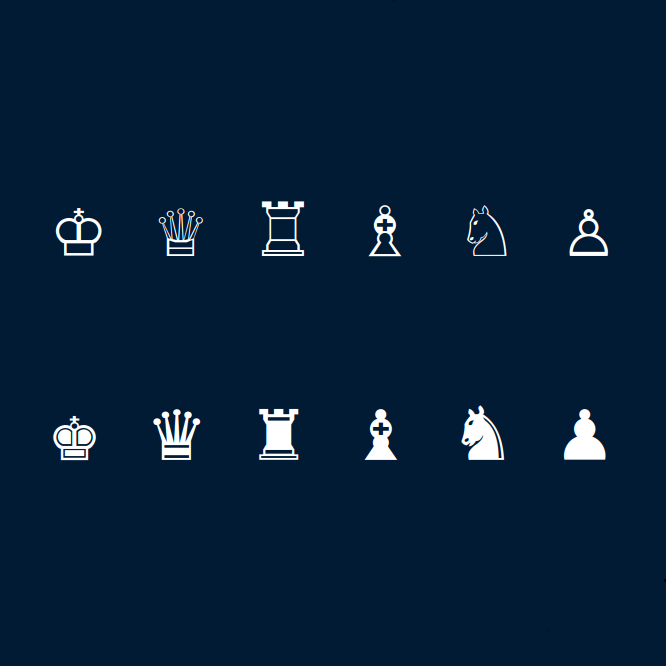
Chess men in Unicode symbols
Any text viewer or editor with Unicode can read or also write Unicode chess
symbols,
ranging from 0xE2 0x99 0x94 to 0xE2 0x99 0x9F in UTF-8, from 0+2654 to 0+265F in
UTF-16,
and from ♔ to ♟ in decimal XML. Any of those methods renders
the symbols shown here:
♔ ♕ ♖ ♗ ♘ ♙ ♚ ♛ ♜ ♝
♞ ♟
The size of those or other characters can usually be defined in most executables
that work with Unicode.
Chess symbols are important for trans-linguistic figurine notation (descriptive
or algebraic) of chess games.
Chronology of chess
History of chess notation
Commencement of game
Conclusion of game
Sample of master game
Advice offered by champions
Hyper links
Searchable data base of chess moves
Chess by Internet
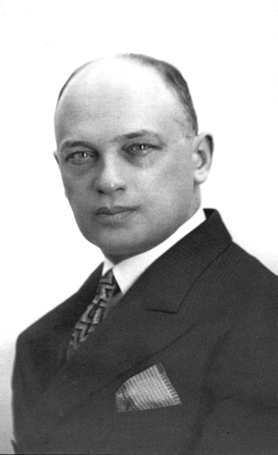
Chess Grand Master Savielly Tartakower (1887-1956)
One of the maximum exponents of the Hypermodern Chess Movement,
and one of the most brilliant minds that have existed in the whole History of Chess
King
Queen
Castle
Bishop
Knight
Pawn
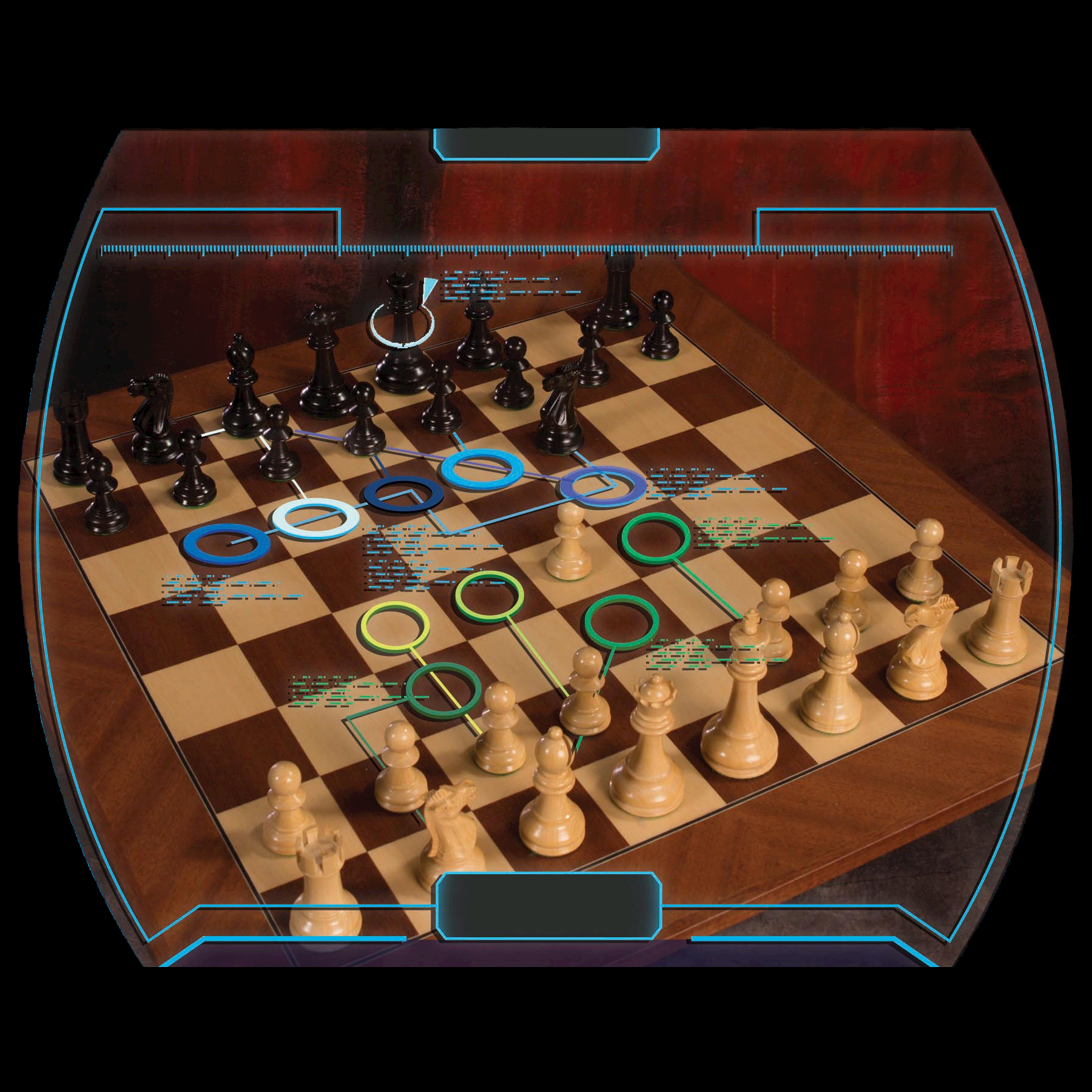
A Staunton chess set showing the Alekhine Defence to the King Debut
The rings and captions help in the analysis of possible continuations of the game
Persia about 570, from Persia to:
Arab Empire about 650, from the Arab Empire to:
Byzantine Empire about 800
From the Byzantine Empire an old version of the game (Arab shatranj) was
carried to Russia about 1150 or later by the Swedish Varangians, perhaps also
to West Europe by the Crusaders. A legend says that chess might have been
carried to Russia by the Tartars about 1250.
There is no evidence that chess had been carried into Europe from Sicily
(chess entered Italy from Germany, already in its European variety and not
in the older variety of Arab shatranj).
France, from France to:
Germany, from Germany to:
Italy, from Italy to:
Bohemia.
From Poland to Russia, but being a newer version (European chess) than the
version that had been carried by the Swedish Varangians (Arab shatranj), or
that the version that had been carried by the Tartars (probably also Arab
shatranj).
Archbishop
Axe
Butterfly
Camel
Chancellor
Claw
Cobra
Commoner
Copper
Cub
Dolphin
Dragon
Duck
(or drake)
Flag
Gnu
Hat
Hawk
Horizontal
crown
Horizontal
sword
Iron
Left
Left
shield
Leopard
Lion
Marshall
Nightrider
Pegasus
Princess
Promoted
bishop
Promoted
dragon
Promoted
horizontal sword
Promoted
knight (horse)
Promoted
castle (rook)
Promoted
sword
Queen
Right
Right
shield
Sword
Tower
Unicorn
Viking
Wizard
Wolf
Zebra
man xboard
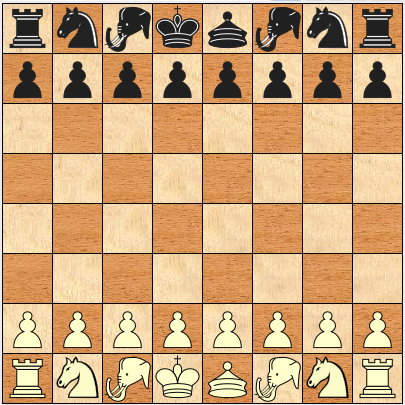
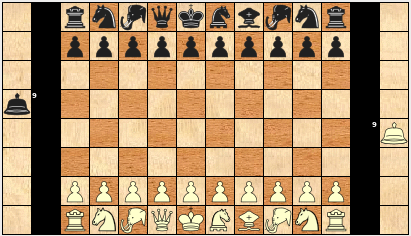 The main differences between Arab shatranj and European chess are:
The main differences between Arab shatranj and European chess are:

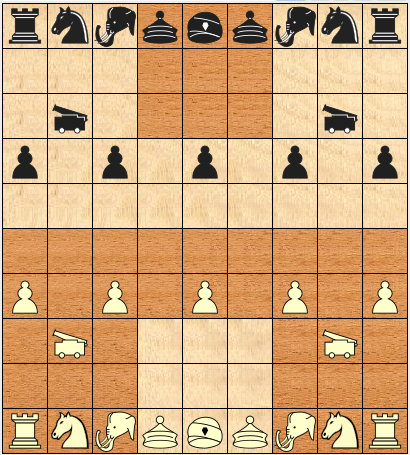 It seems that when European chess was beginning to diverge from Arab shatranj,
some varieties of the game had existed for centuries in the Asian Far East.
It seems that when European chess was beginning to diverge from Arab shatranj,
some varieties of the game had existed for centuries in the Asian Far East.
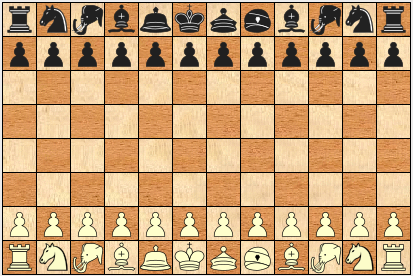
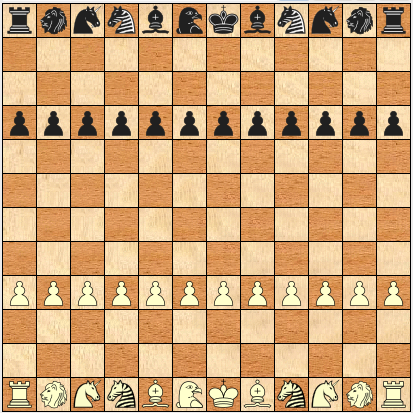 In the Middle Ages strange varieties of chess were experimented in Europe, and
some of them enjoyed frequent practice in certain countries or among certain
social classes. Although those varieties subsequently lost their former appeal,
they became historically famous nonetheless.
In the Middle Ages strange varieties of chess were experimented in Europe, and
some of them enjoyed frequent practice in certain countries or among certain
social classes. Although those varieties subsequently lost their former appeal,
they became historically famous nonetheless.

 1614: The white king commands his owne knight into the third house before his
owne bishop.
1614: The white king commands his owne knight into the third house before his
owne bishop.
1750: K. Knight to His Bishop's 3d.
1837: K. Kt. to B. third sq.
1848: K. Kt. to B's 3rd.
1859: K. Kt. to B. 3d.
1874: K Kt to B3
1889: KKt - B3
1904: Kt-KB3
1946: N-KB3
♔ ♕ ♖ ♗ ♘ ♙ ♚ ♛ ♜ ♝
♞ ♟
-Tied conclusion of game (of equal score) or drawn game (undecided)
-Depleted battlefield
-One bishop
-Two knights
-Two bishops who move onto squares of the same
colour (at least one of them had obviously been a pawn, promoted to bishop).
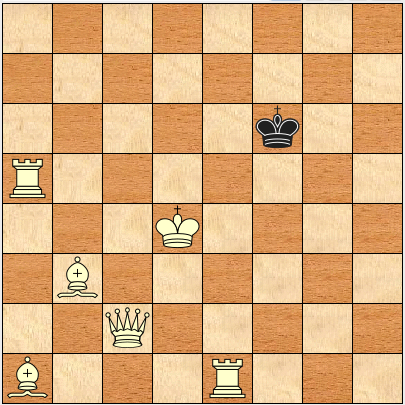
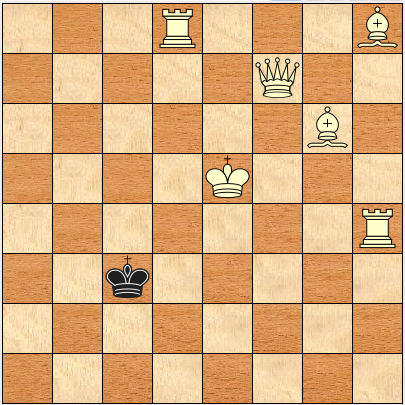 Problem by Tolosa y Carreras: "White gives check mate in less than one move".
Problem by Tolosa y Carreras: "White gives check mate in less than one move".
1 P2K-4K King or Royal Debut
2 p2bq-4bq Sicilian Defence
3 P4K x p5Q
... Continuation of prior moves along a different variation, line, branch.
Every three dots and space representing one prior move in that game.
K White king.
Q White queen.
B White bishop.
H White knight.
C White castle, white rook.
P White pawn.
=Q Promotion of pawn to white queen.
=B Promotion of pawn to white bishop.
=H Promotion of pawn to white knight.
=C Promotion of pawn to white castle.
- Move.
! Move considered good
(sc) Short castling (to the side of the king).
x Capture.
+ Direct check to the opposing king.
++ Double check (a direct check plus a discovered check).
X Direct check mate to the opposing king.
XX Double check mate (a direct check plus a discovered check).
= Tied conclusion of game (of equal score) or drawn game (undecided).
k Black king.
q Black queen.
b Black bishop.
h Black knight.
c Black castle, black rook.
p Black pawn.
=q Promotion of pawn to black queen.
=b Promotion of pawn to black bishop.
=h Promotion of pawn to black knight.
=c Promotion of pawn to black castle.
~ Move ad libitum.
? Move considered dubious
(lc) Long castling (to the side of the queen).
x (ep) Capture of pawn en passant, by another pawn.
-+ Discovered check (by a chess man who has not moved).
-X Discovered check mate (by a chess man who has not moved).
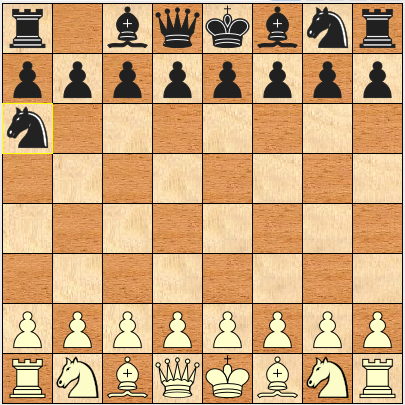
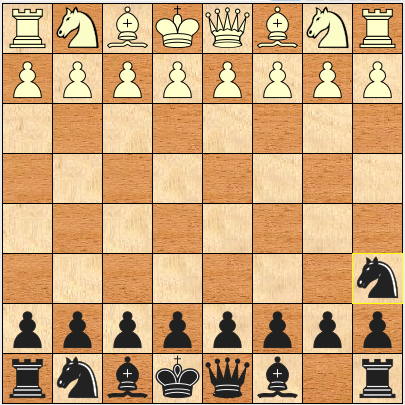 1~, 2 h1hq-3cq Lemming Defence.
1~, 2 h1hq-3cq Lemming Defence.

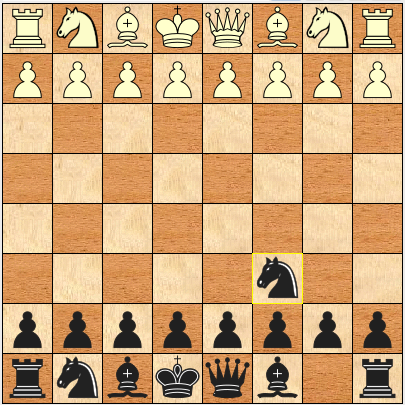 1~, 2 h1hq-3bq Nimzowitsch or Fischer Defence. Played by Aaron Nimzowitsch
(Jew with Baltic passport who resided in Denmark) in the 1930's, and by
Robert Fischer of Illinois (later a resident of Iceland) in the 1970's.
Nimzowitsch was one of the chess "Hyper Moderns" in the 1930's, together with
Savielly Tartakower, Richard Reti and others. Fischer was a World Champion.
1~, 2 h1hq-3bq Nimzowitsch or Fischer Defence. Played by Aaron Nimzowitsch
(Jew with Baltic passport who resided in Denmark) in the 1930's, and by
Robert Fischer of Illinois (later a resident of Iceland) in the 1970's.
Nimzowitsch was one of the chess "Hyper Moderns" in the 1930's, together with
Savielly Tartakower, Richard Reti and others. Fischer was a World Champion.
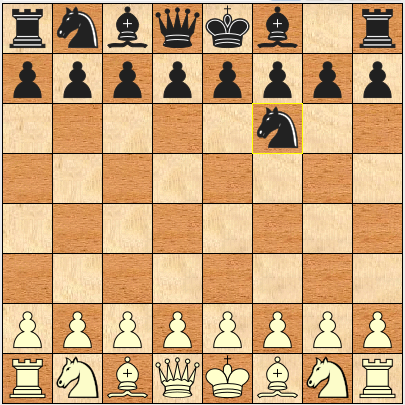
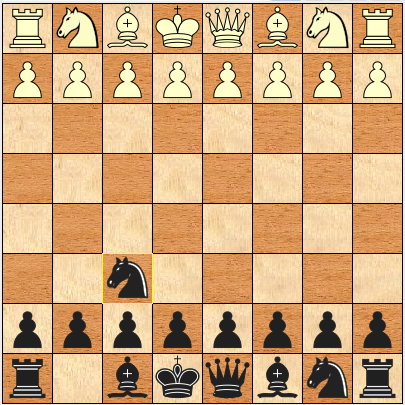 1~, 2 h1hk-3bk Alekhine Defence. Played by Alexandr Alekhine of Russia
(later of France) in the 1930's. Alekhine was a World Champion, the only one
who died with the Title in his possession.
1~, 2 h1hk-3bk Alekhine Defence. Played by Alexandr Alekhine of Russia
(later of France) in the 1930's. Alekhine was a World Champion, the only one
who died with the Title in his possession.
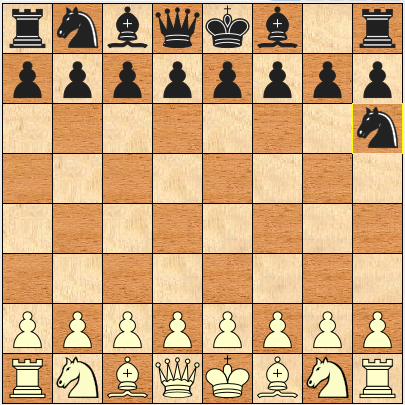
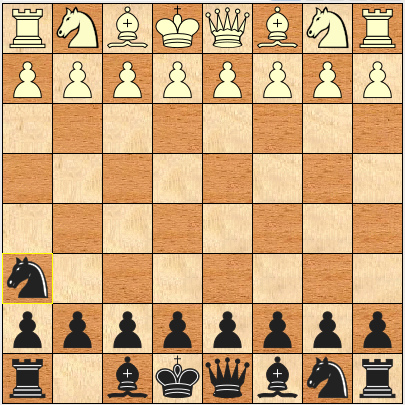 1~, 2 h1hk-3ck Hippopotamus Defence (called Tuebingen Defence if played against
1 P2HQ-4HQ, which is the Hunt, Orangutang, Polish or Sokolsky Debut, listed
later).
1~, 2 h1hk-3ck Hippopotamus Defence (called Tuebingen Defence if played against
1 P2HQ-4HQ, which is the Hunt, Orangutang, Polish or Sokolsky Debut, listed
later).

 1~, 2 p2cq-3cq Saint George, Baker, Birmingham or Miles Defence, Country Move.
Formerly known as Saint George or Baker Defence, it was played in Birmingham
1980 by Anthony Miles of England, thence also called Birmingham or Miles
Defence.
1~, 2 p2cq-3cq Saint George, Baker, Birmingham or Miles Defence, Country Move.
Formerly known as Saint George or Baker Defence, it was played in Birmingham
1980 by Anthony Miles of England, thence also called Birmingham or Miles
Defence.
... ... ... ... 5 P2BQ-4BQ, 6 p4hq x P5bq if white pawn unprotected.
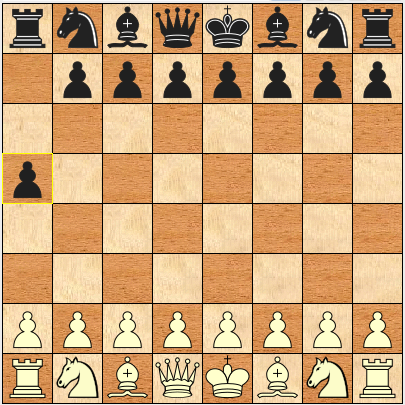
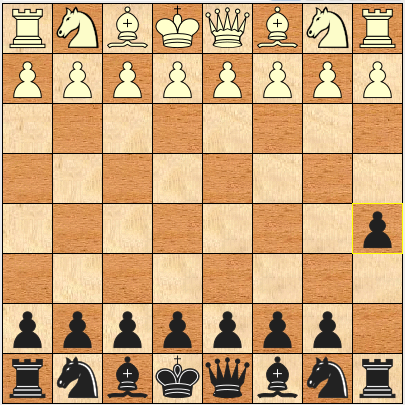 1~, 2 p2cq-4cq Corn Stalk Defence, Country Move.
1~, 2 p2cq-4cq Corn Stalk Defence, Country Move.
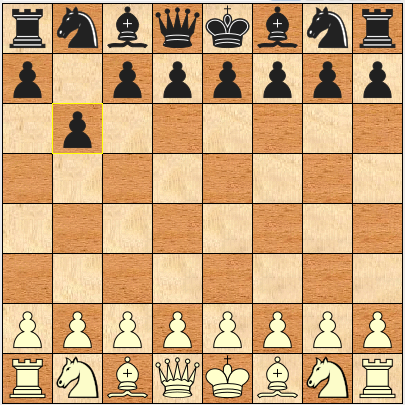
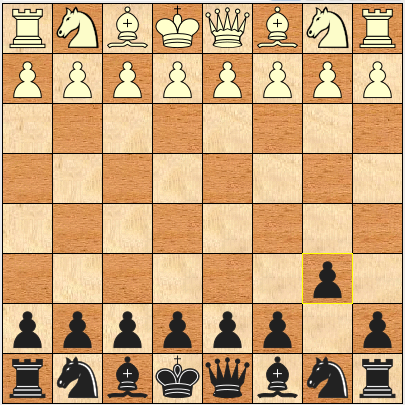 1~, 2 p2hq-3hq Queen Fianchetto, Owen or English Defence. Played by Anthony
Miles with black against Anatoly Karpov with white in Skara 1980, but known
before.
1~, 2 p2hq-3hq Queen Fianchetto, Owen or English Defence. Played by Anthony
Miles with black against Anatoly Karpov with white in Skara 1980, but known
before.

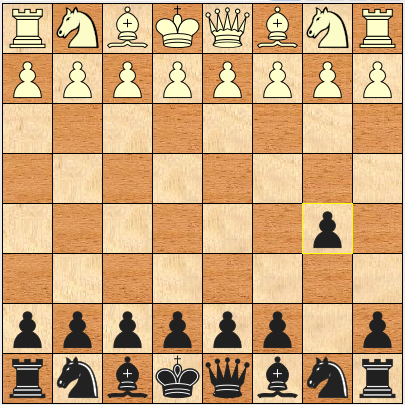 1~, 2 p2hq-4hq Polish Defence.
1~, 2 p2hq-4hq Polish Defence.

 1~, 2 p2bq-3bq Caro-Kann Defence.
1~, 2 p2bq-3bq Caro-Kann Defence.
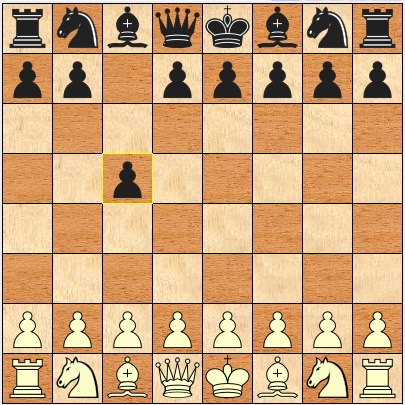
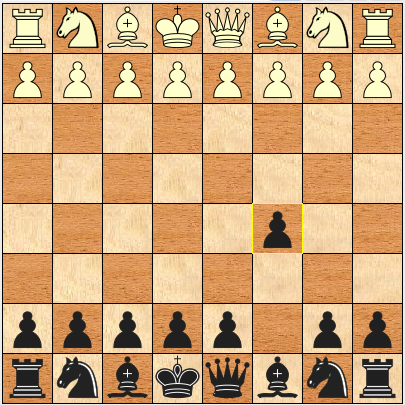 1~, 2 p2bq-4bq O'Kelly Defence (called Sicilian Defence if played against
1 P2K-4K, which is the King or Royal Debut, listed later. Called Benoni
Gambit if played against 1 P2Q-4Q, which is the Queen Debut, listed later).
1~, 2 p2bq-4bq O'Kelly Defence (called Sicilian Defence if played against
1 P2K-4K, which is the King or Royal Debut, listed later. Called Benoni
Gambit if played against 1 P2Q-4Q, which is the Queen Debut, listed later).
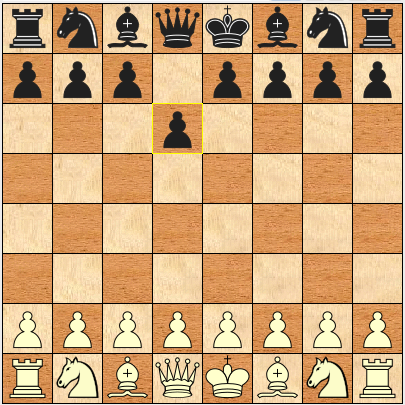
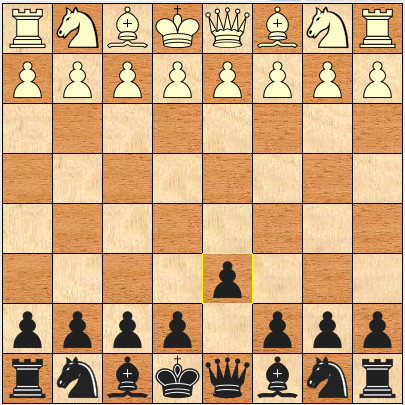 1~, 2 p2q-3q Indian Defence.
1~, 2 p2q-3q Indian Defence.

 1~, 2 p2q-4q Queen Defence.
1~, 2 p2q-4q Queen Defence.
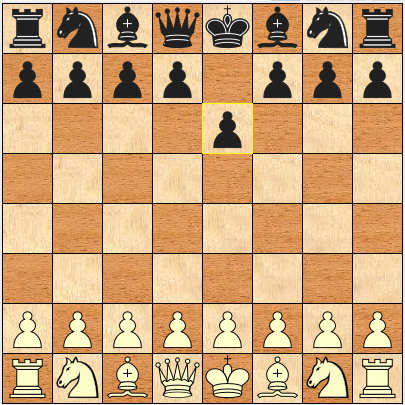
 1~, 2 p2k-3k French Defence.
1~, 2 p2k-3k French Defence.

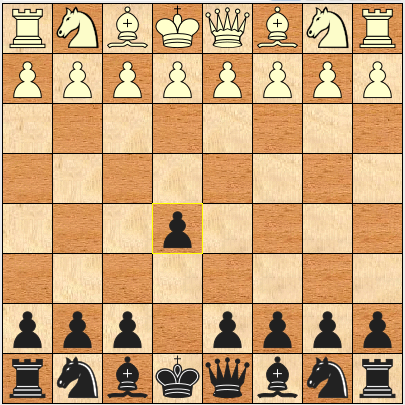 1~, 2 p2k-4k King or Royal Defence (called From Gambit if played against
1 P2BK-4BK, which is the Bird, Stein or Dutch Debut, listed later).
1~, 2 p2k-4k King or Royal Defence (called From Gambit if played against
1 P2BK-4BK, which is the Bird, Stein or Dutch Debut, listed later).

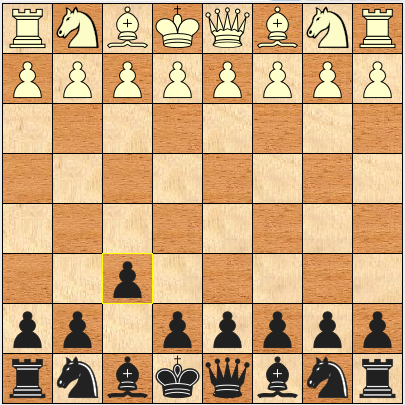 1~, 2 p2bk-3bk Barnes Defence.
1~, 2 p2bk-3bk Barnes Defence.
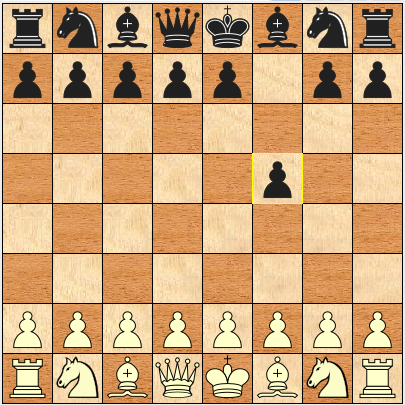
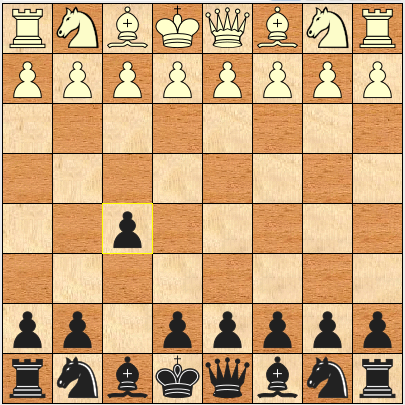 1~, 2 p2bk-4bk Fred, Stein or Dutch Defence. Played by Stein of Netherland in
the 1920's.
1~, 2 p2bk-4bk Fred, Stein or Dutch Defence. Played by Stein of Netherland in
the 1920's.
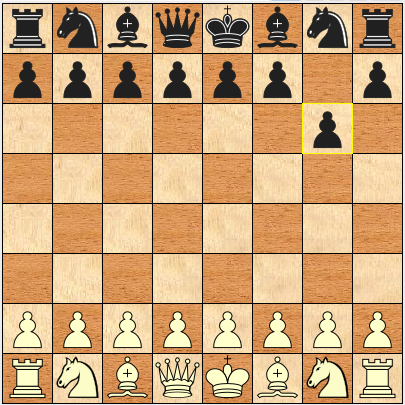
 1~, 2 p2hk-3hk King Fianchetto Defence.
1~, 2 p2hk-3hk King Fianchetto Defence.
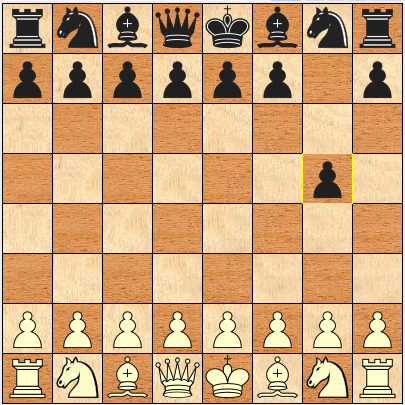
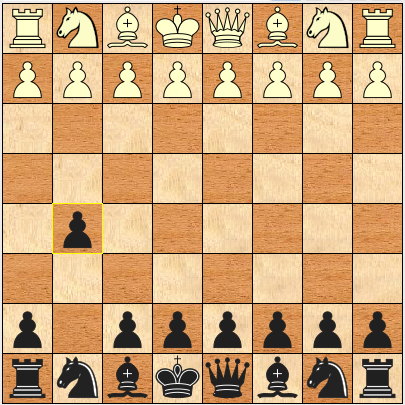 1~, 2 p2hk-4hk Borg Defence. The name "Borg" is not here related to the Star
Trek scientific fiction series of Gene Roddenberry, it is simply the name
"Grob" read backwards (see later 1 P2HK-4HK).
1~, 2 p2hk-4hk Borg Defence. The name "Borg" is not here related to the Star
Trek scientific fiction series of Gene Roddenberry, it is simply the name
"Grob" read backwards (see later 1 P2HK-4HK).

 1~, 2 p2ck-3ck Carr Defence, Country Move.
1~, 2 p2ck-3ck Carr Defence, Country Move.
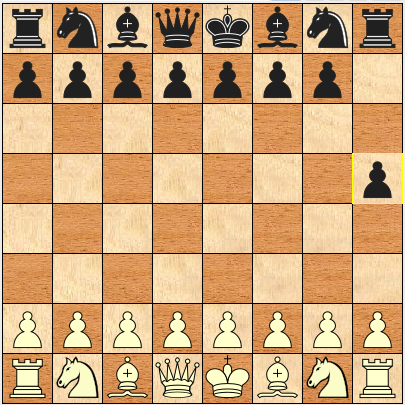
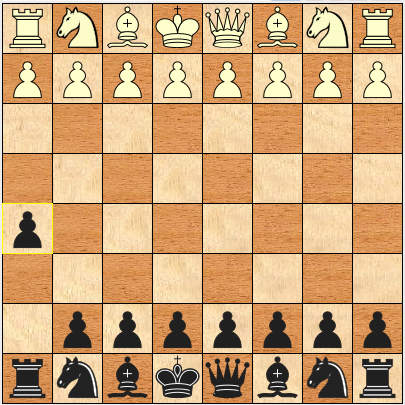 1~, 2 p2ck-4ck Mc Kenzie's Opponent Defence, Country Move (called Lasker
Defence if played against 1 P2HK-3HK, which is the King Fianchetto Debut,
listed later). Played by an amateur opposing Captain Mc Kenzie in the 1880's.
1~, 2 p2ck-4ck Mc Kenzie's Opponent Defence, Country Move (called Lasker
Defence if played against 1 P2HK-3HK, which is the King Fianchetto Debut,
listed later). Played by an amateur opposing Captain Mc Kenzie in the 1880's.
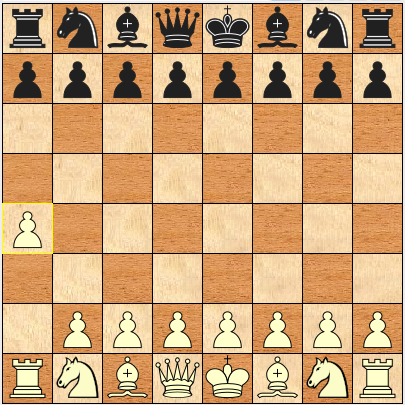
 1 P2CQ-4CQ Meadow Hay or Ware Debut, Country Move. With this first move,
Preston Ware of Massachusetts (1820-1890) defeated Captain Mc Kenzie in 1888.
1 P2CQ-4CQ Meadow Hay or Ware Debut, Country Move. With this first move,
Preston Ware of Massachusetts (1820-1890) defeated Captain Mc Kenzie in 1888.
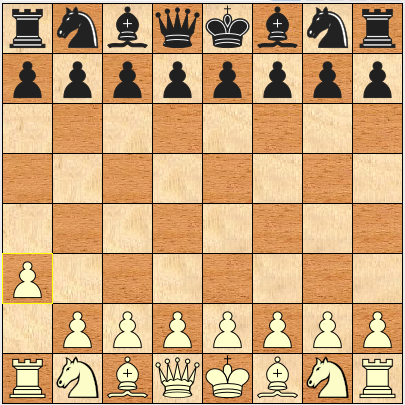
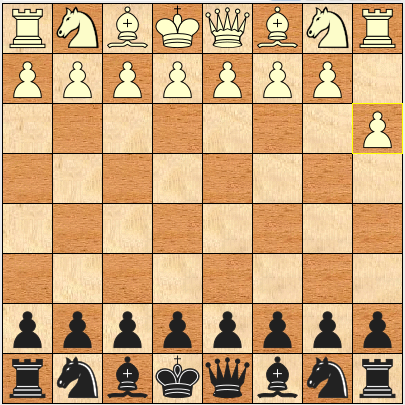 1 P2CQ-3CQ Anderssen Debut, Country Move. With this first move, Adolf
Anderssen of Prussia was defeated by Paul Morphy of Louisiana in Europe in
1858. Anderssen and Morphy were consecutive World Champions.
1 P2CQ-3CQ Anderssen Debut, Country Move. With this first move, Adolf
Anderssen of Prussia was defeated by Paul Morphy of Louisiana in Europe in
1858. Anderssen and Morphy were consecutive World Champions.
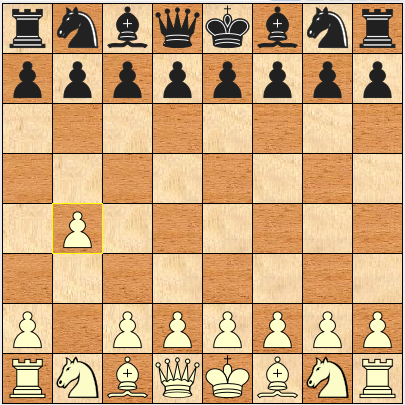
 1 P2HQ-4HQ Hunt, Orangutang, Polish or Sokolsky Debut. This move was formerly
known as Hunt Debut. Savielly Tartakower played it in New York in 1924. He
informed that the zoo's female orangutang had advised him to begin the game
in that fashion. Tartakower was one of the chess "Hyper Moderns" in the 1930's,
together with Aaron Nimzowitsch, Richard Reti and others. Tartakower played
for Poland (in spite of being unable to speak Polish), thus the move became
known as Orangutang or Polish Debut. It was analysed in depth by Polish
Master Sokolsky, by whose name it is also known.
1 P2HQ-4HQ Hunt, Orangutang, Polish or Sokolsky Debut. This move was formerly
known as Hunt Debut. Savielly Tartakower played it in New York in 1924. He
informed that the zoo's female orangutang had advised him to begin the game
in that fashion. Tartakower was one of the chess "Hyper Moderns" in the 1930's,
together with Aaron Nimzowitsch, Richard Reti and others. Tartakower played
for Poland (in spite of being unable to speak Polish), thus the move became
known as Orangutang or Polish Debut. It was analysed in depth by Polish
Master Sokolsky, by whose name it is also known.

 1 P2HQ-3HQ Queen Fianchetto or Larsen Debut. Played by Bent Larsen of Denmark
in the 1960's, but known before him.
1 P2HQ-3HQ Queen Fianchetto or Larsen Debut. Played by Bent Larsen of Denmark
in the 1960's, but known before him.
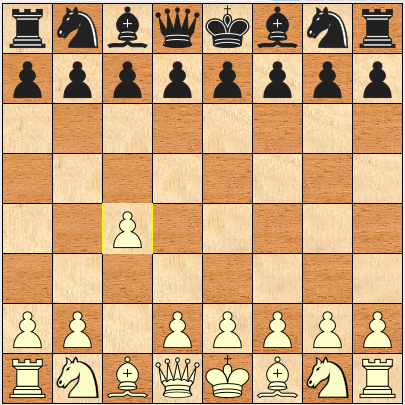
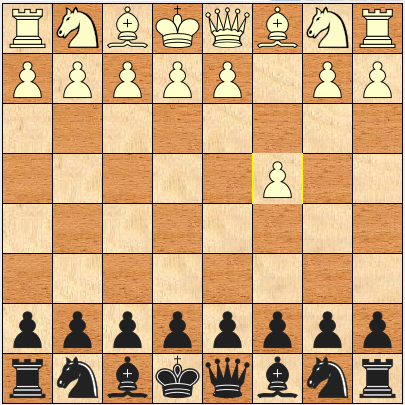 1 P2BQ-4BQ English Debut. With this first move, Howard Staunton of England
defeated Saint Amant of France in the 1840's. Staunton organised the first
International Chess Tournament, held in London 1851.
1 P2BQ-4BQ English Debut. With this first move, Howard Staunton of England
defeated Saint Amant of France in the 1840's. Staunton organised the first
International Chess Tournament, held in London 1851.
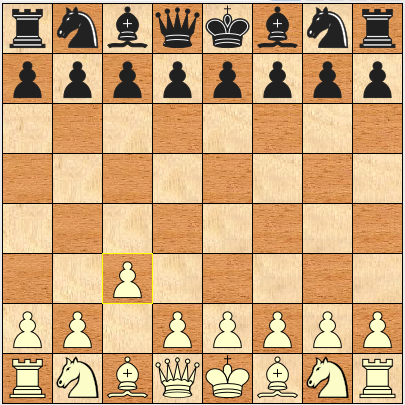
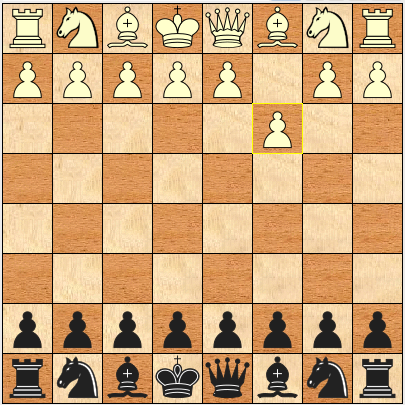 1 P2BQ-3BQ Zaragoza Debut.
1 P2BQ-3BQ Zaragoza Debut.

 1 P2Q-4Q Queen Debut.
1 P2Q-4Q Queen Debut.
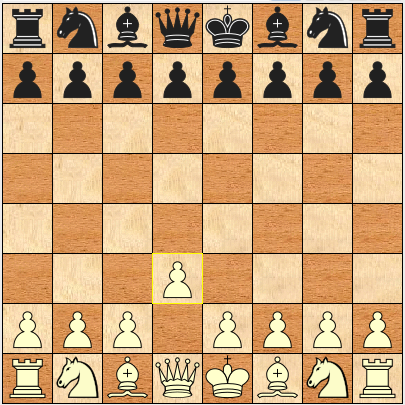
 1 P2Q-3Q Indian, Hanham or Mieses Debut.
1 P2Q-3Q Indian, Hanham or Mieses Debut.

 1 P2K-4K King or Royal Debut.
1 P2K-4K King or Royal Debut.